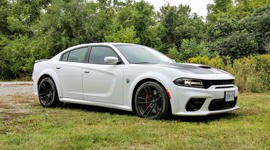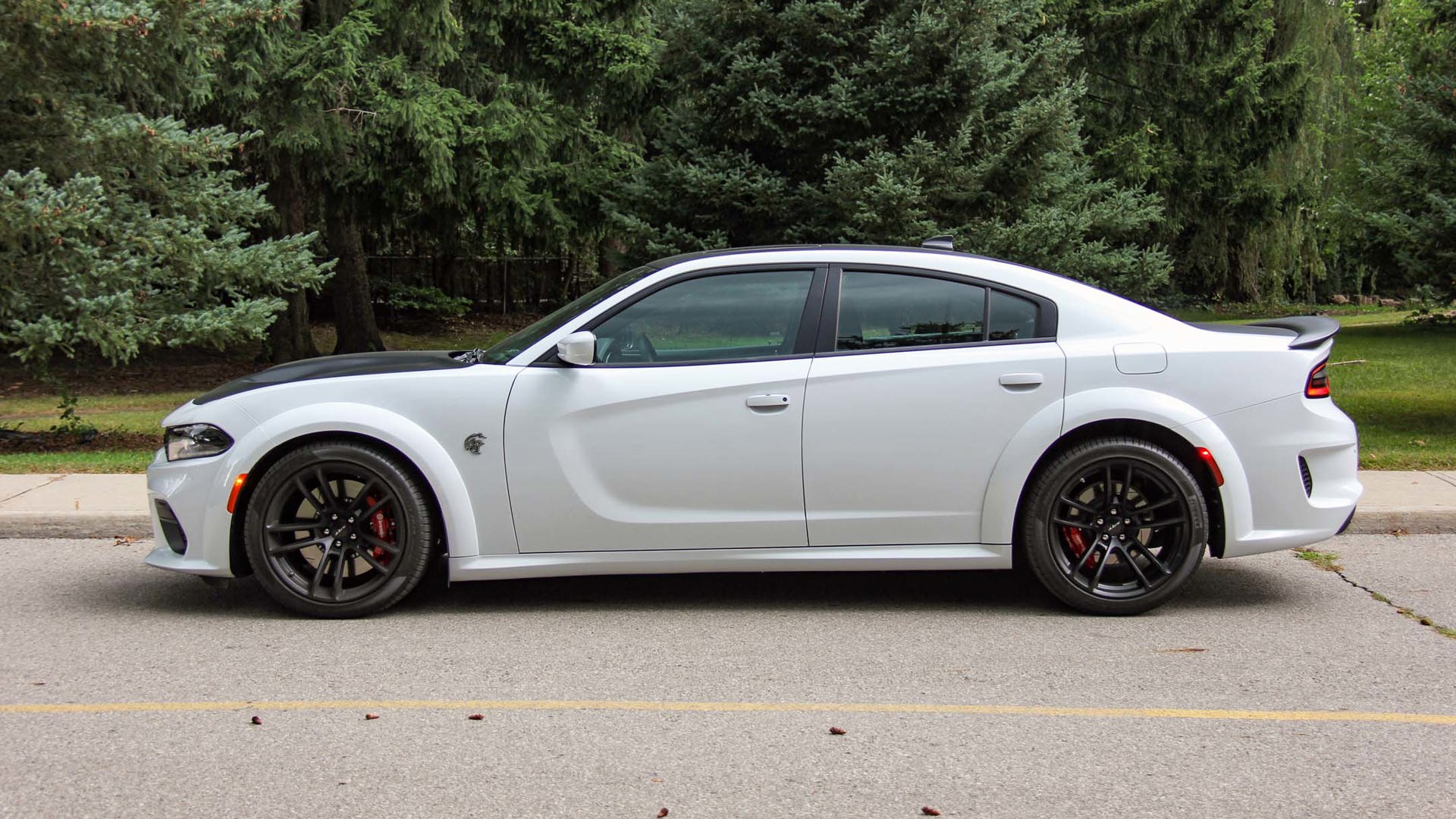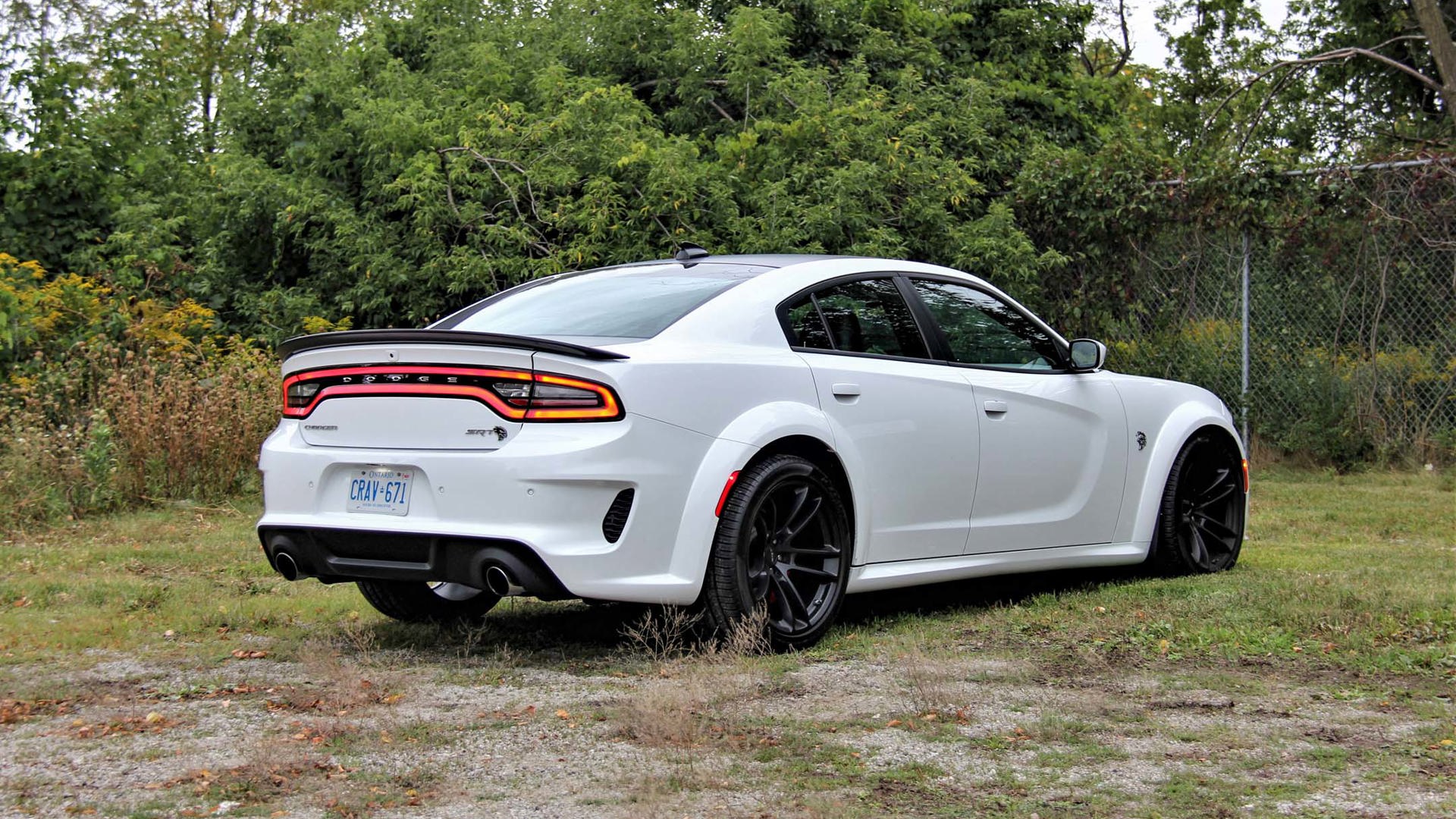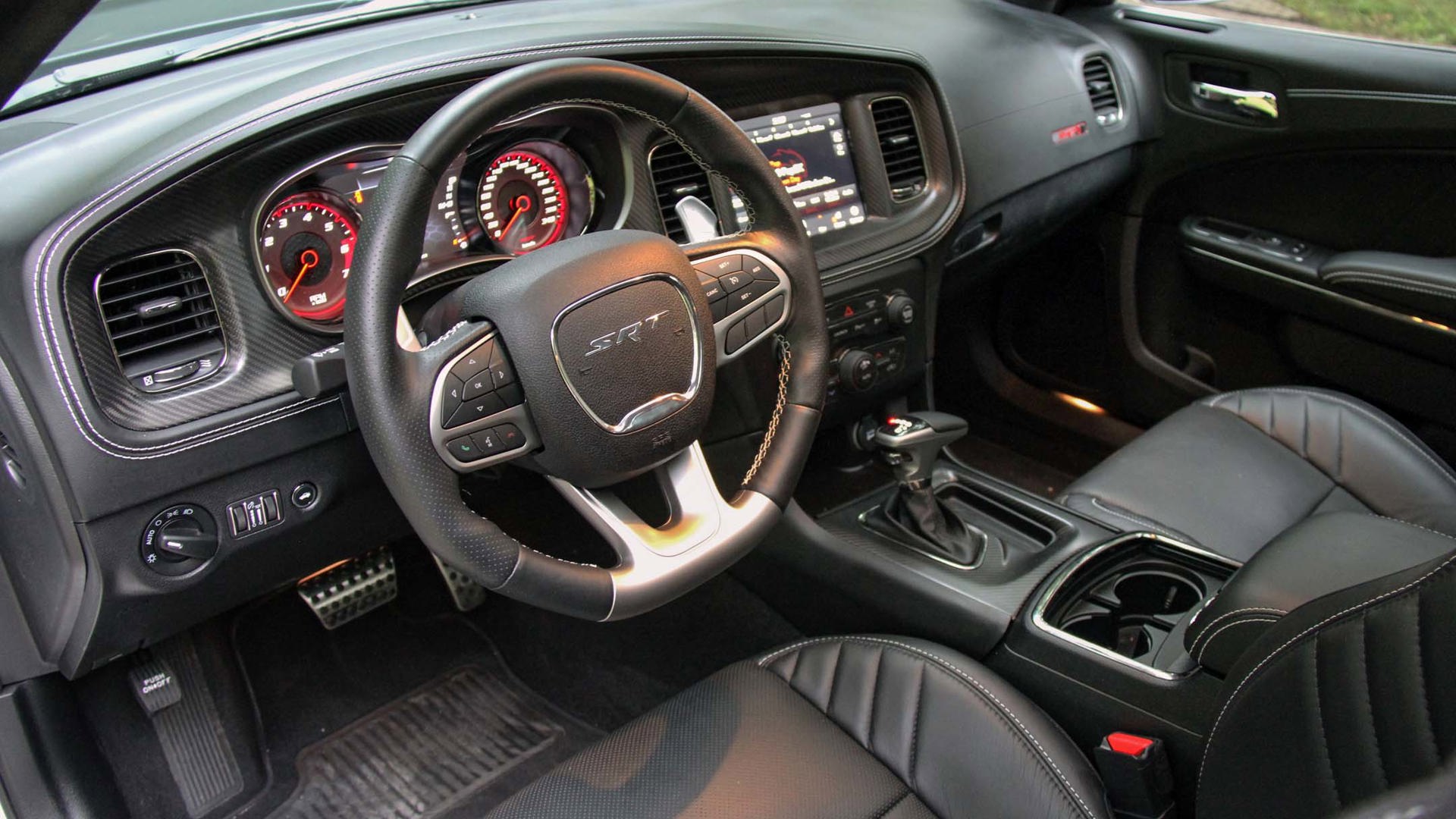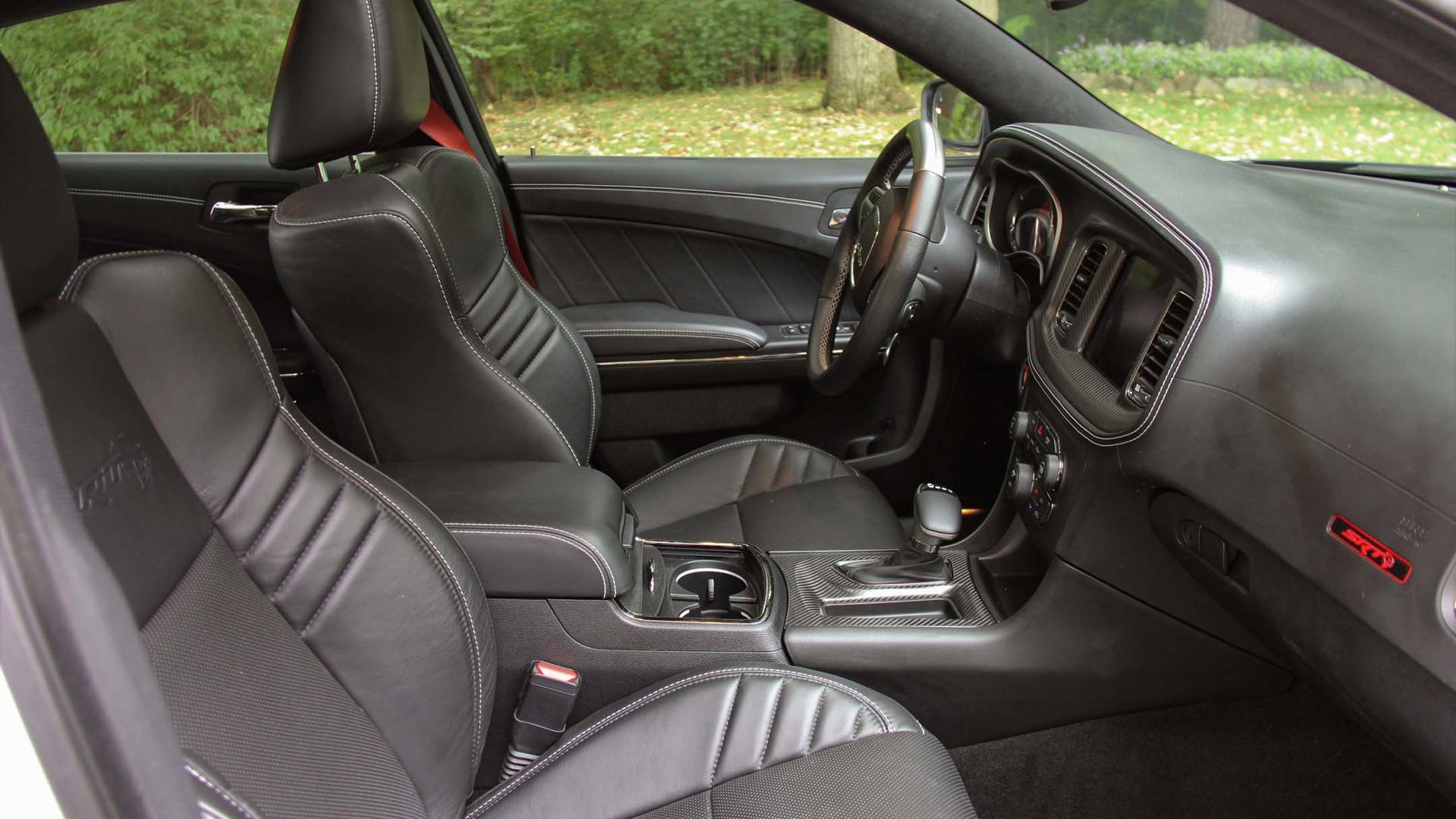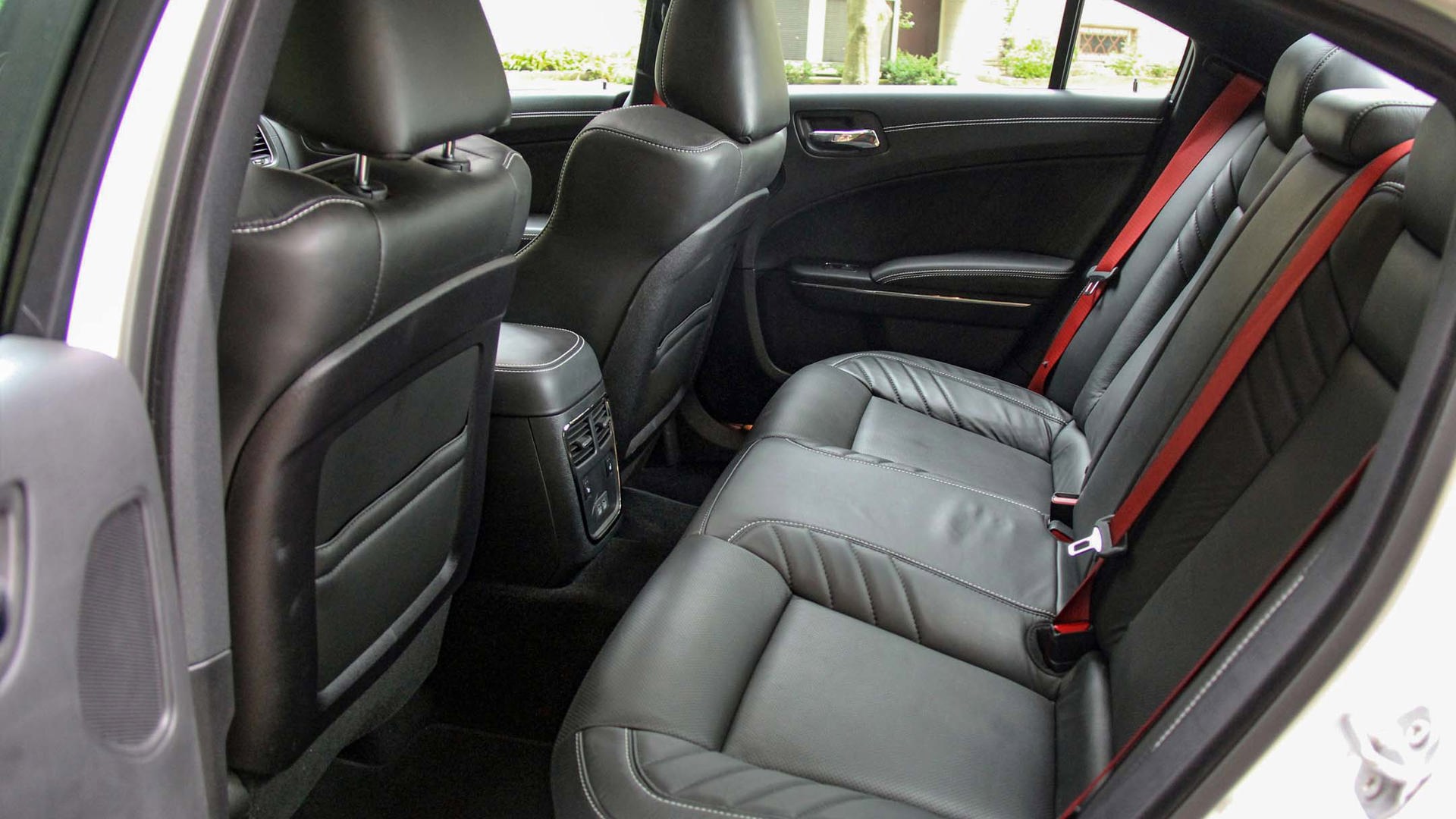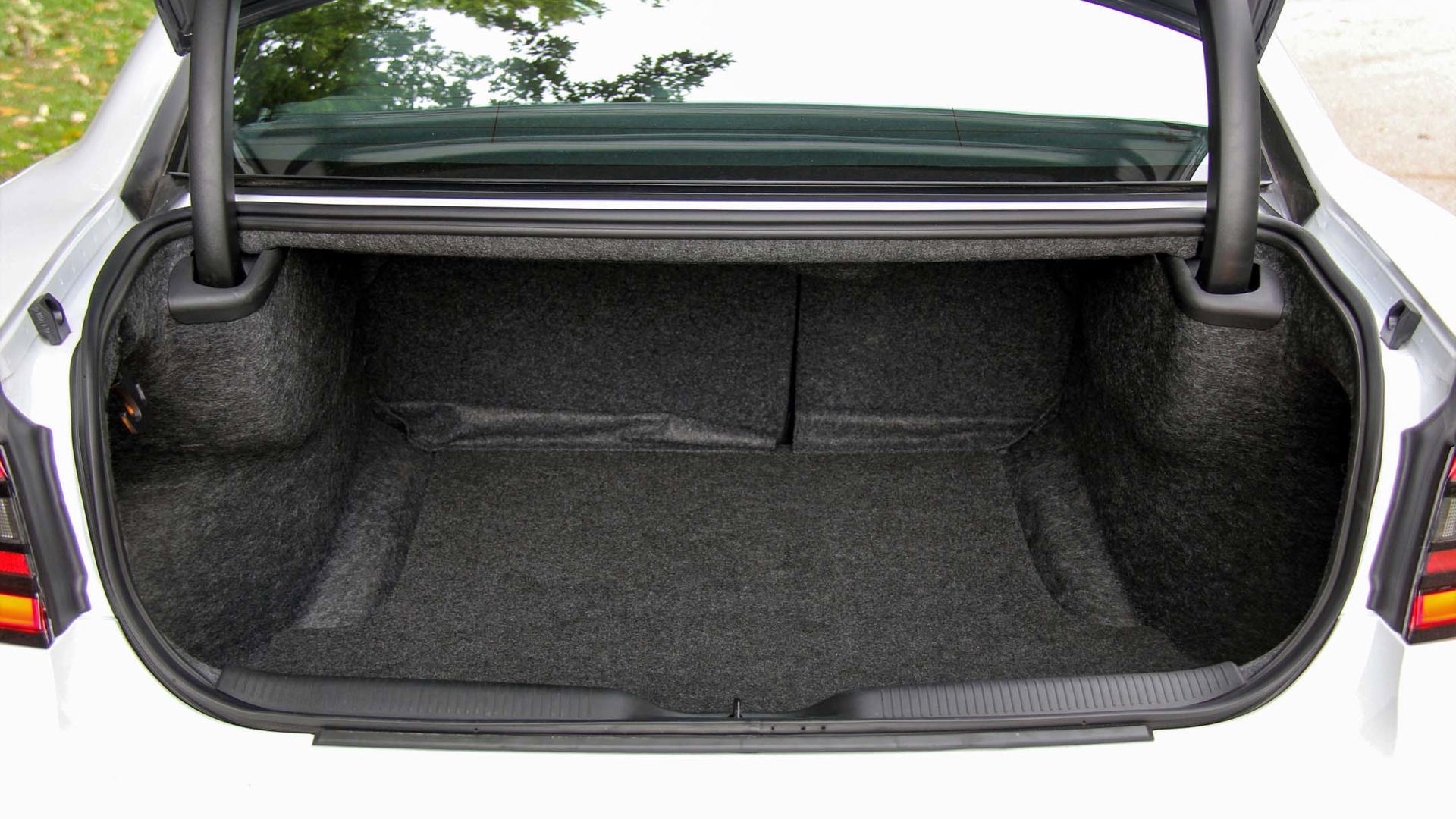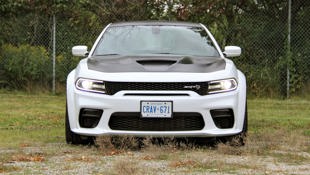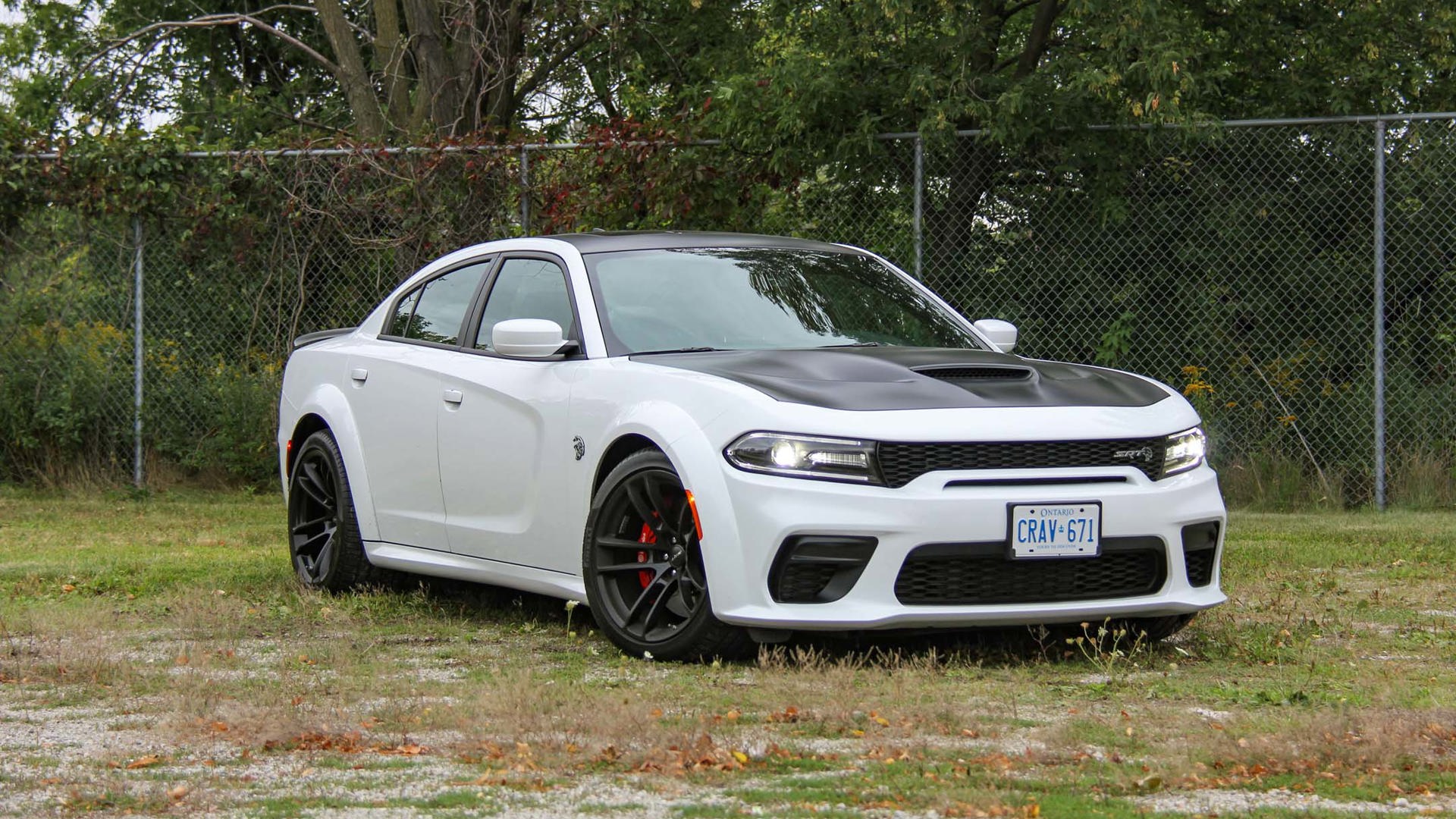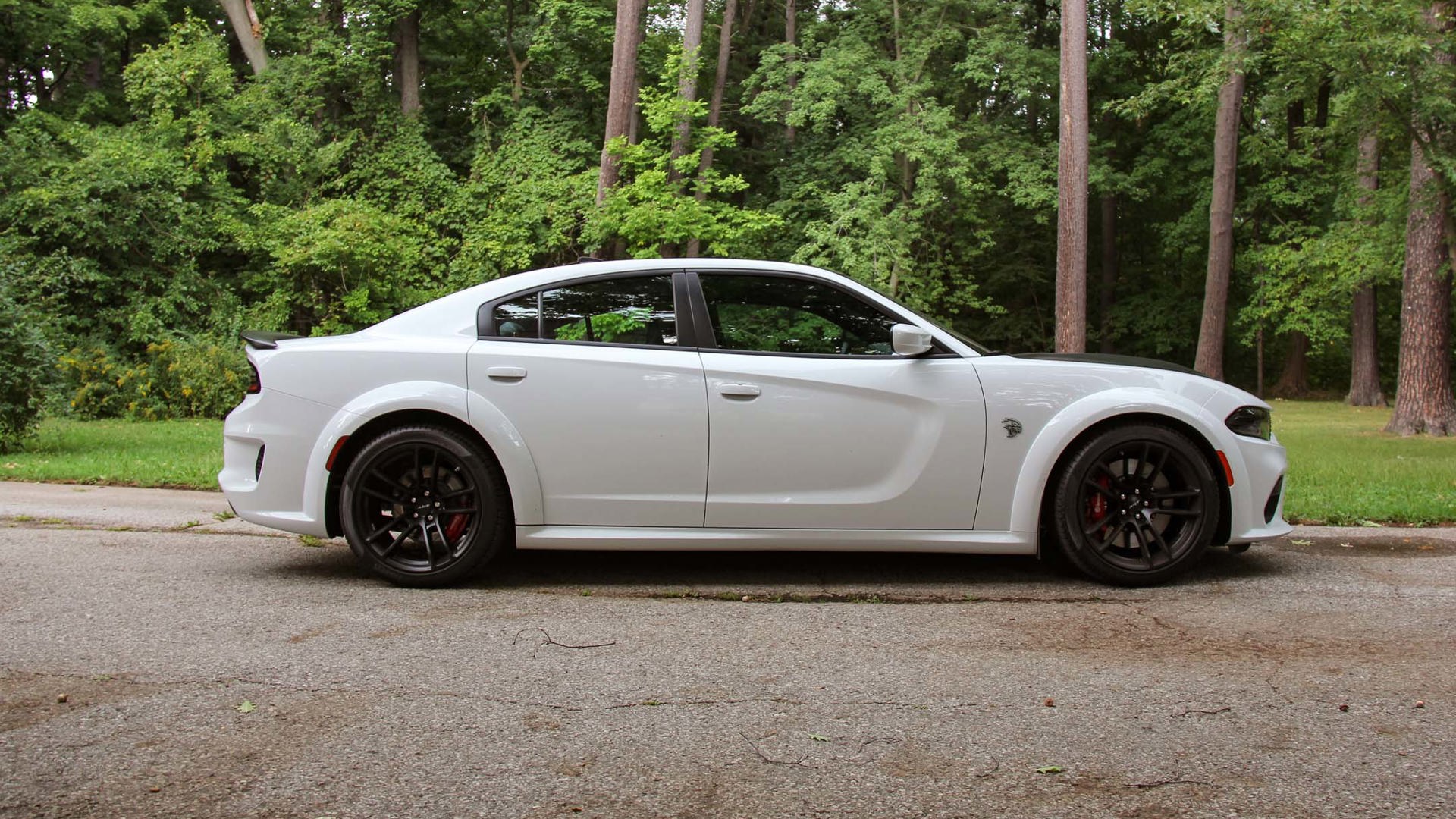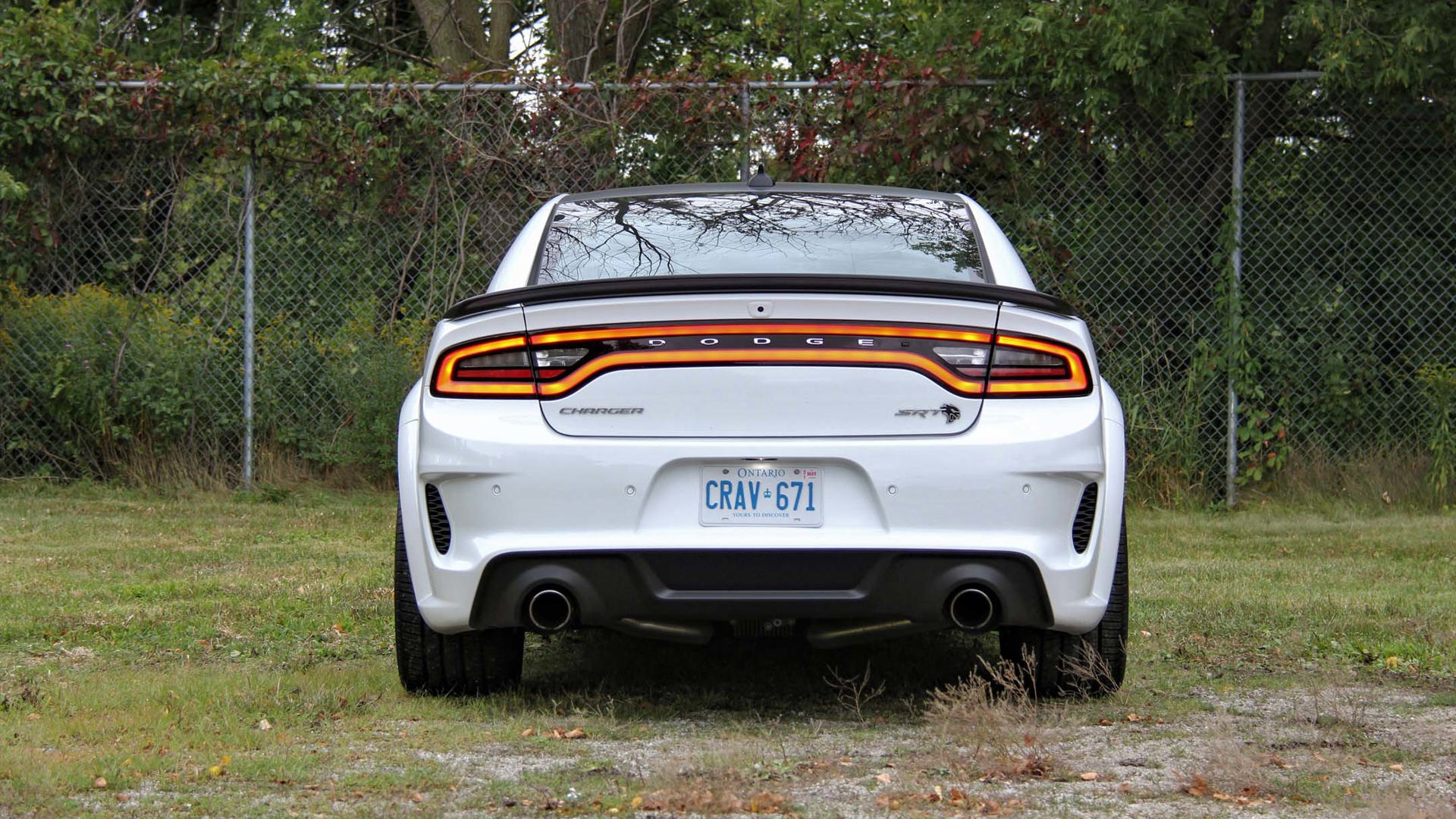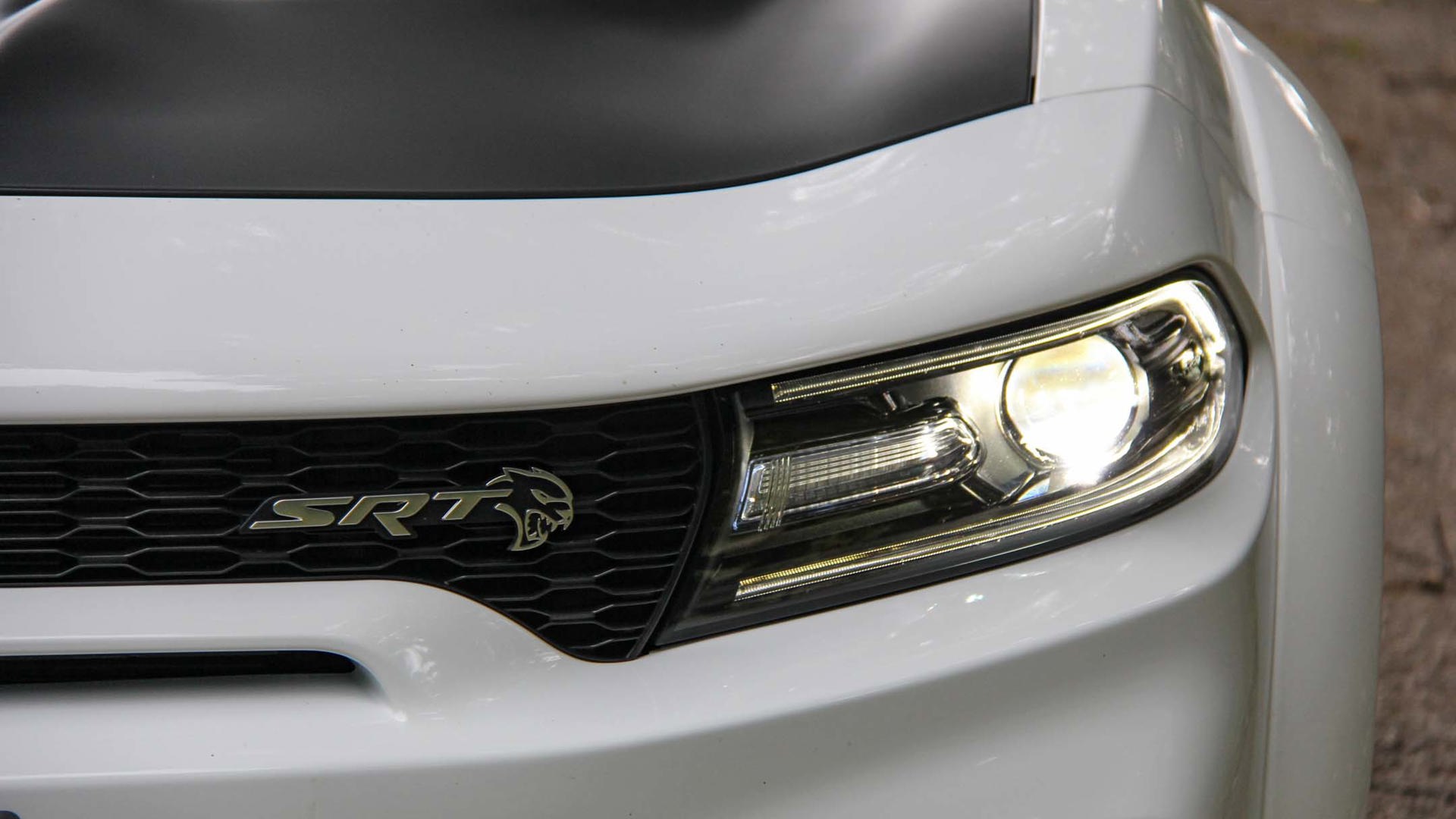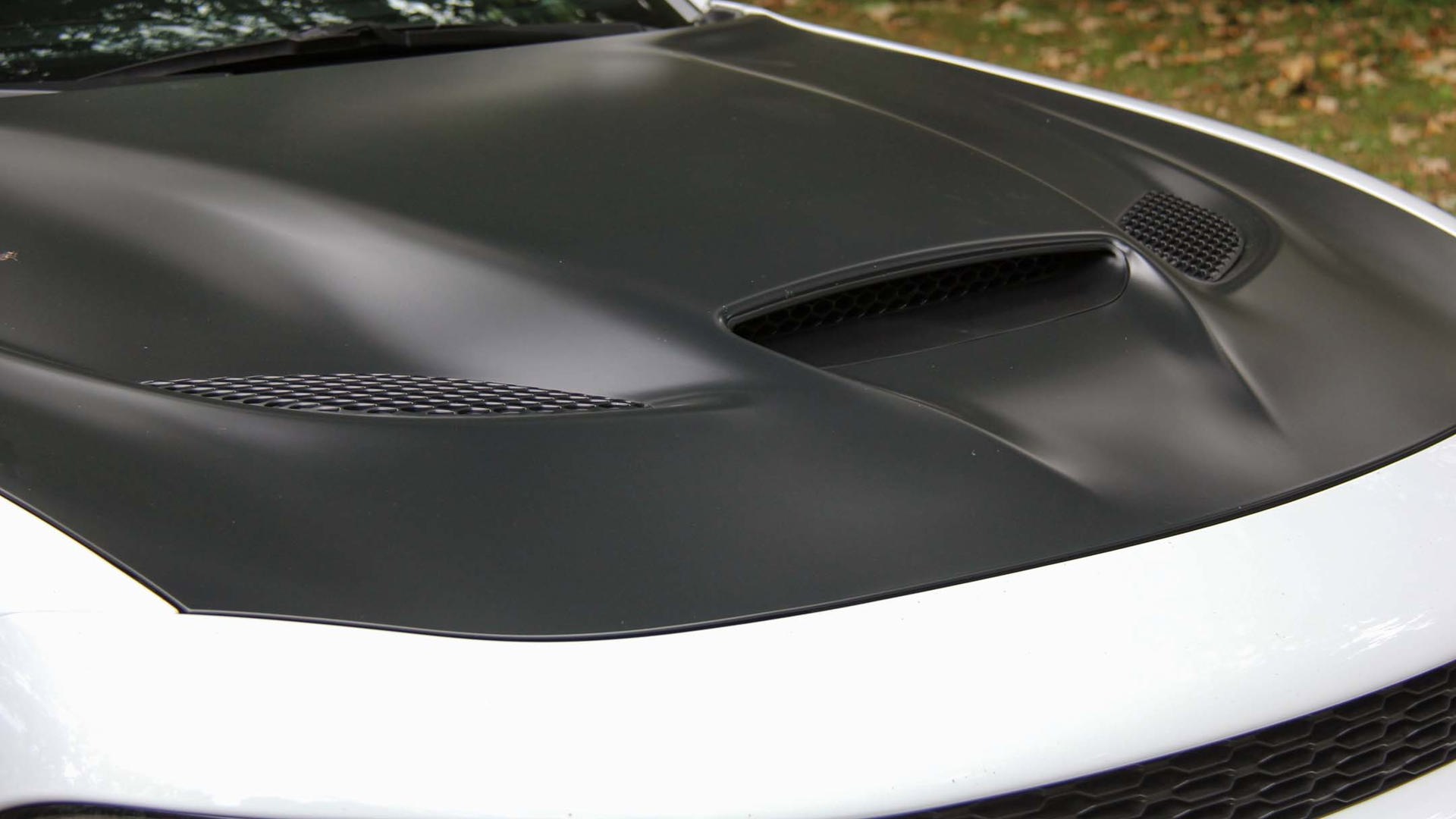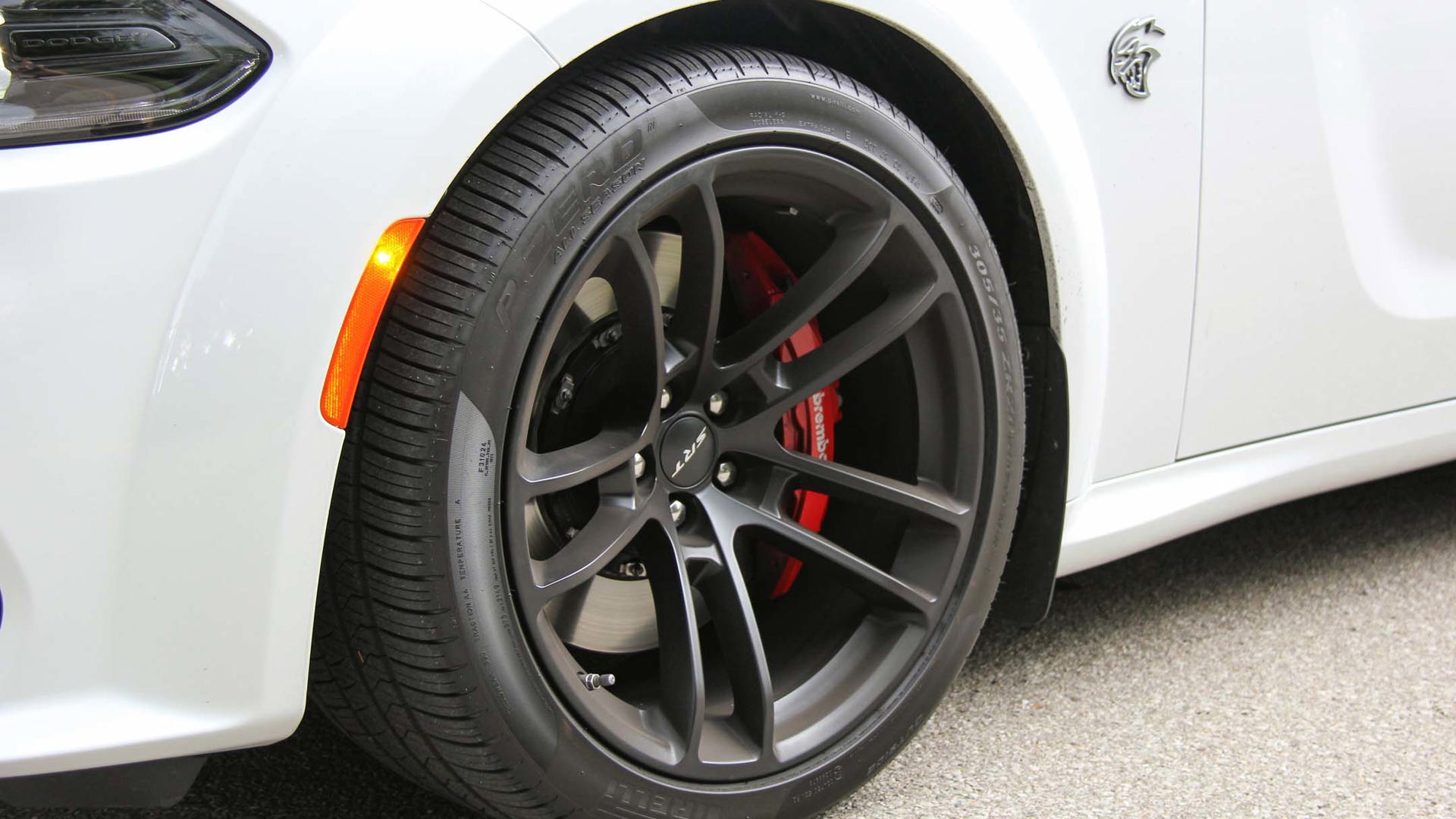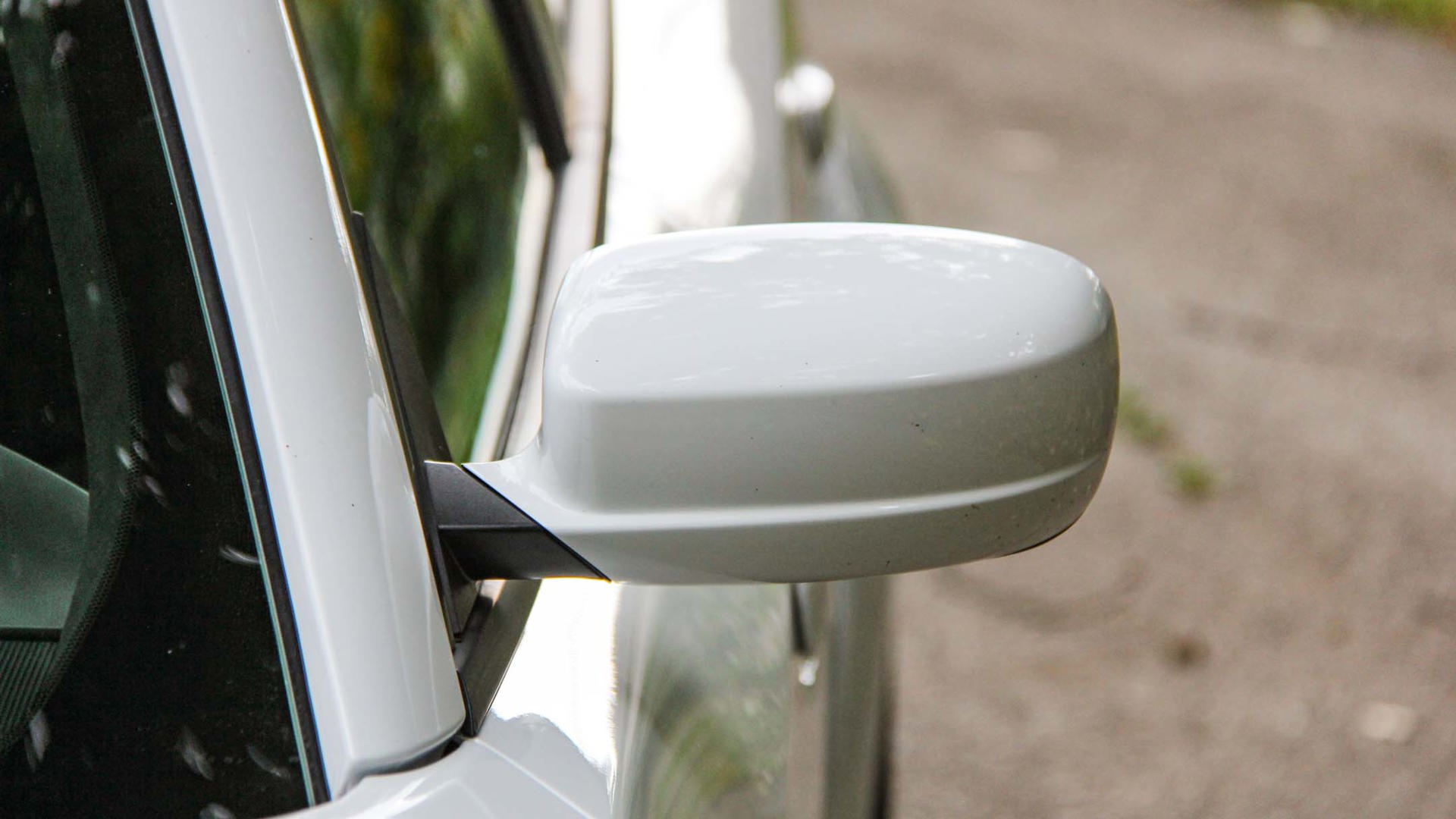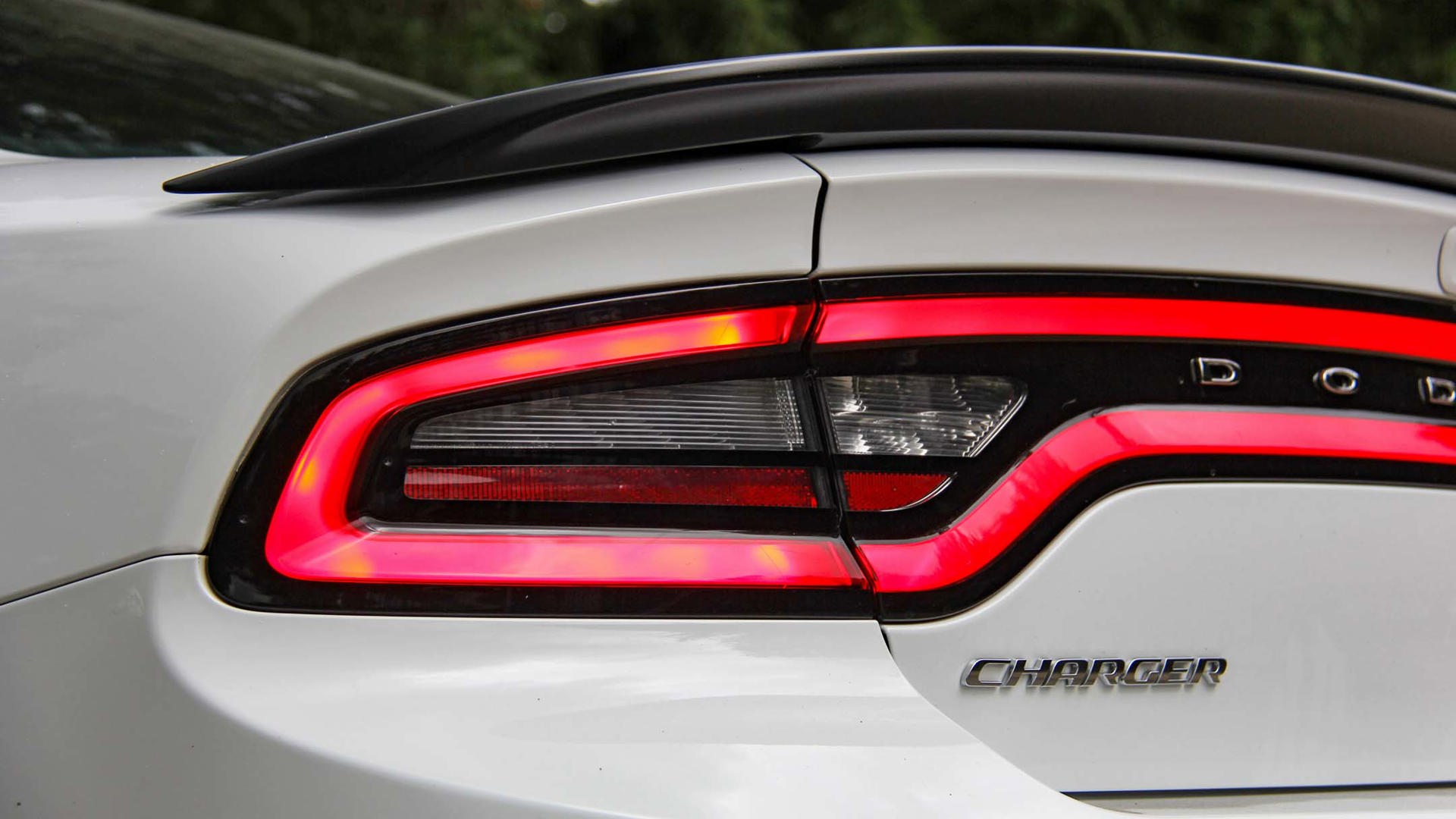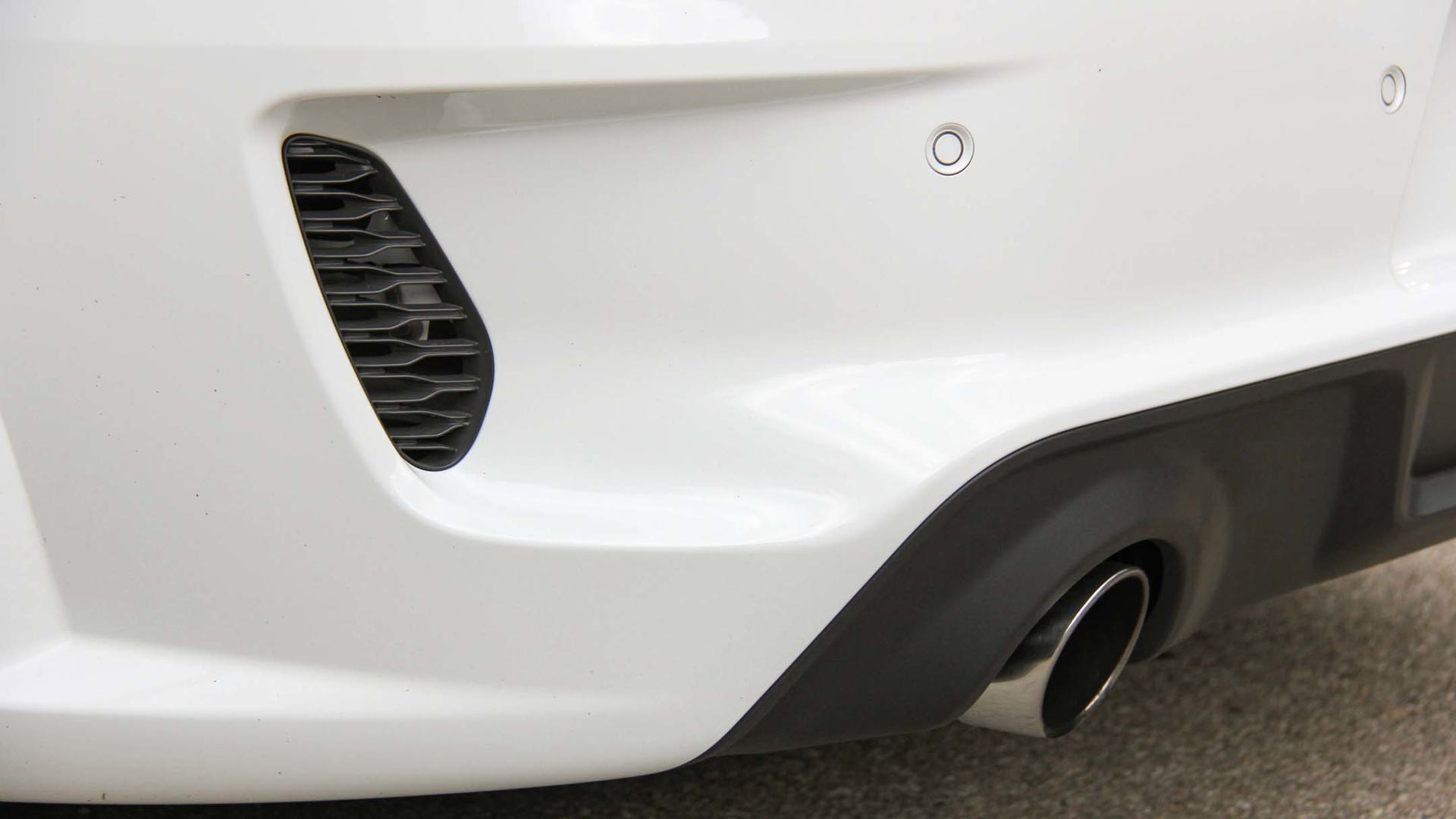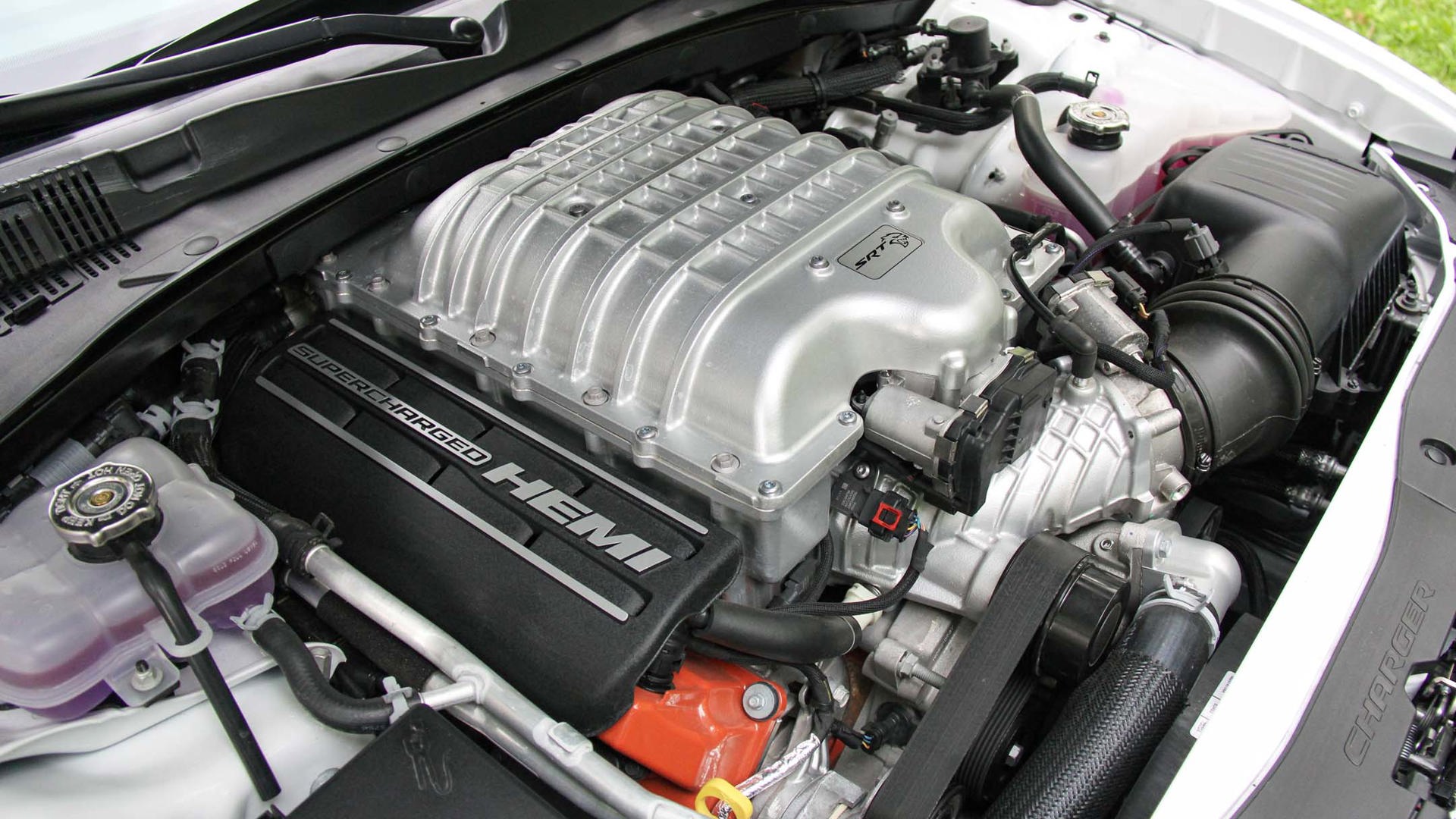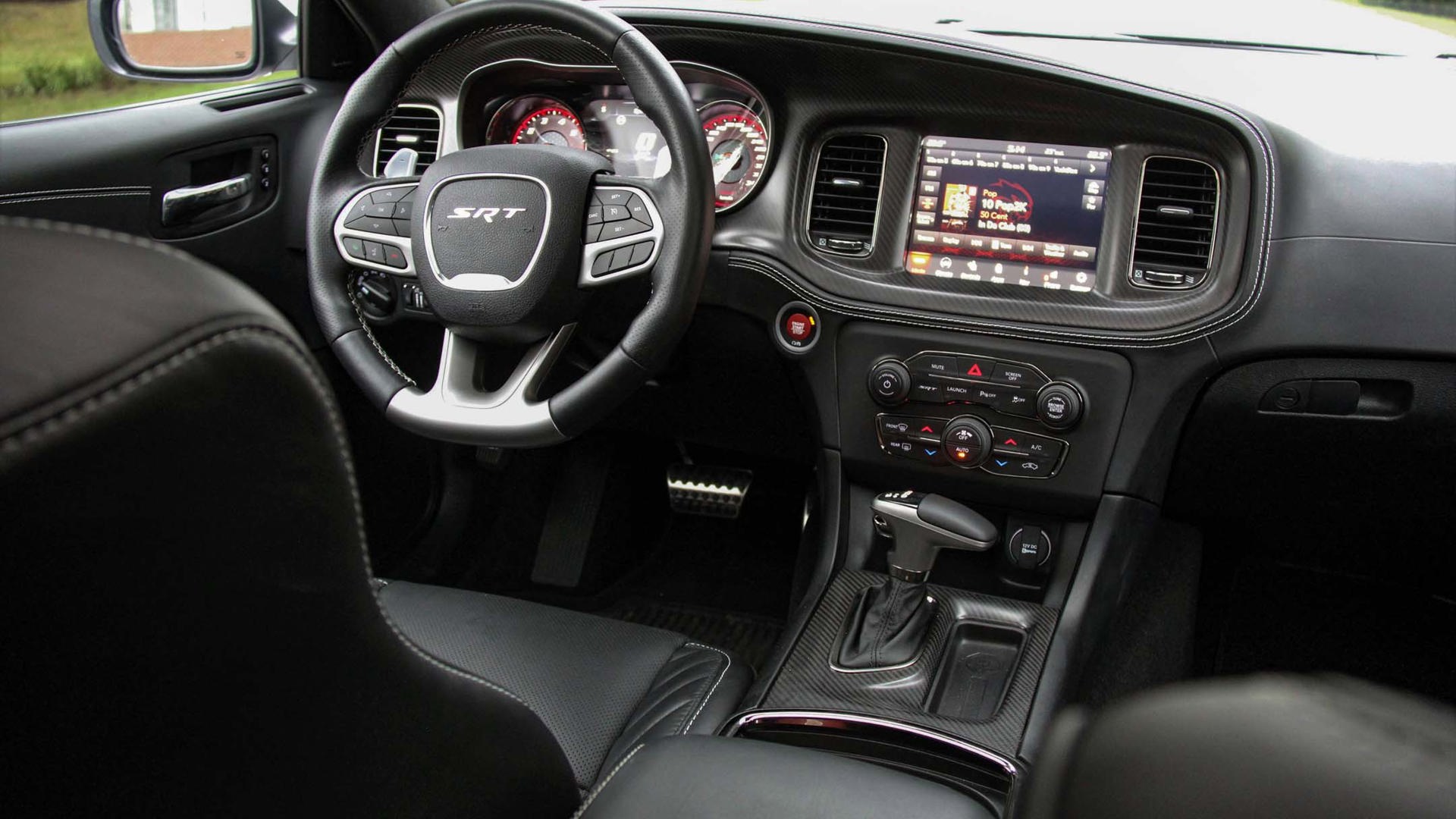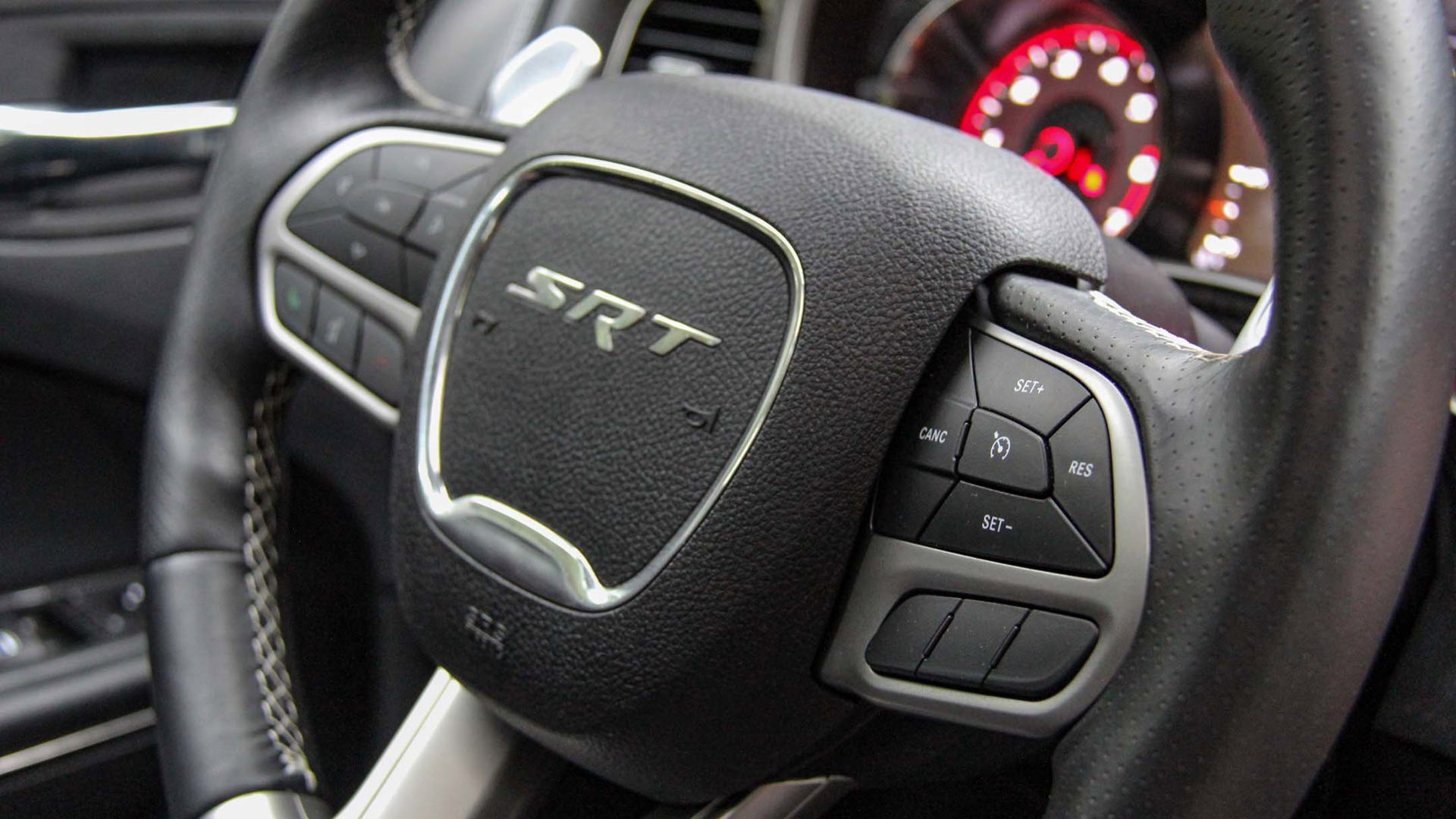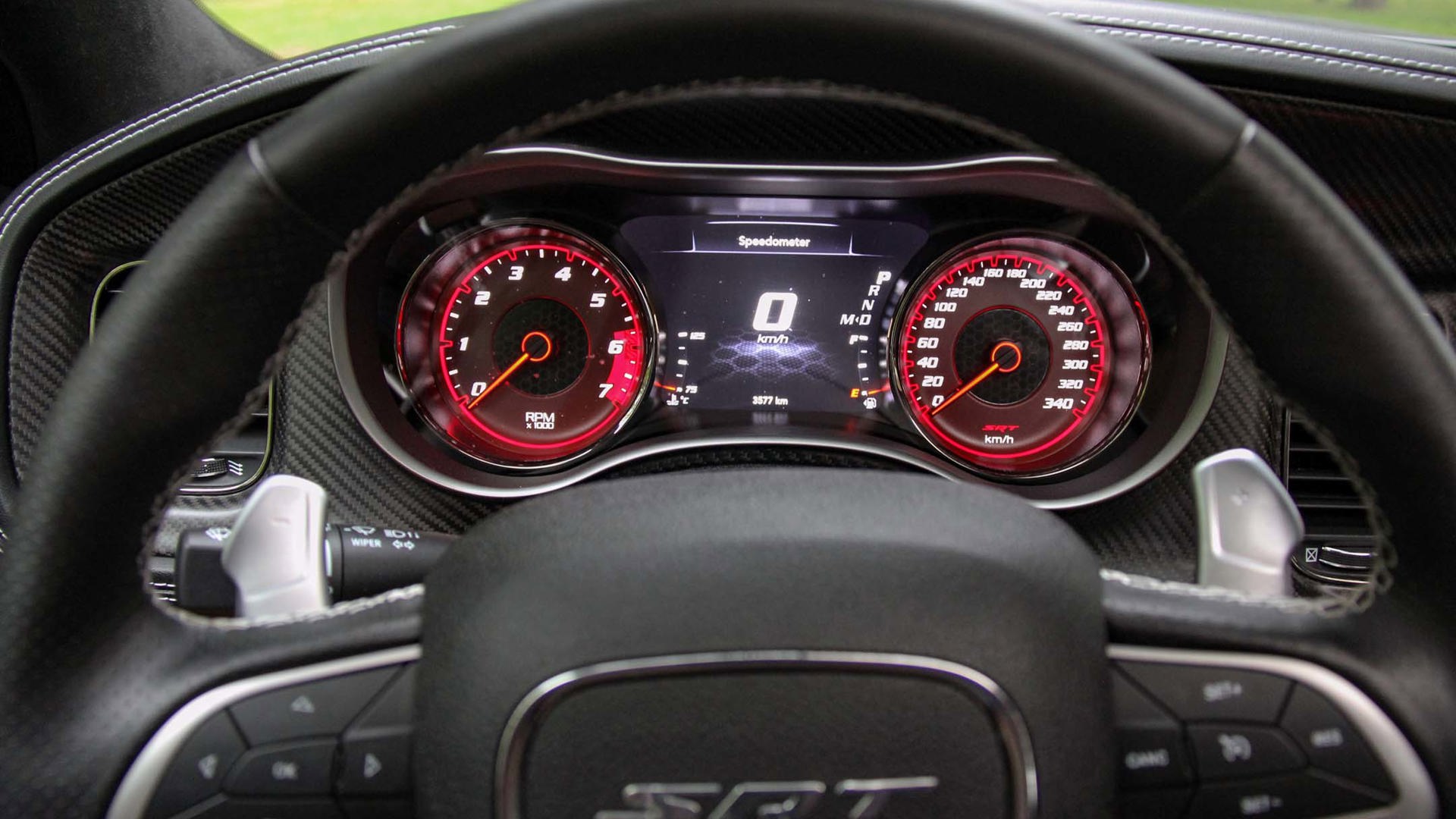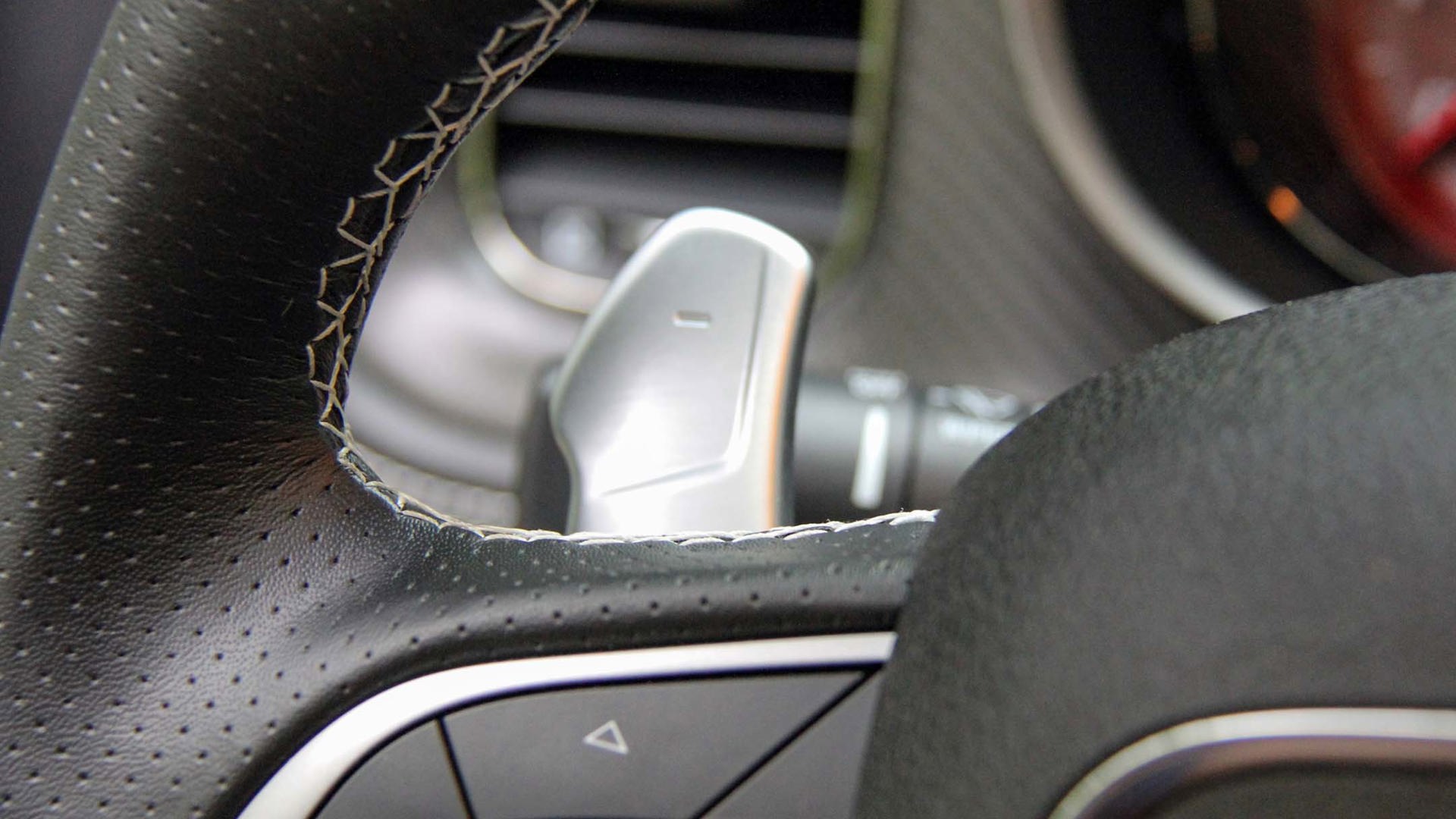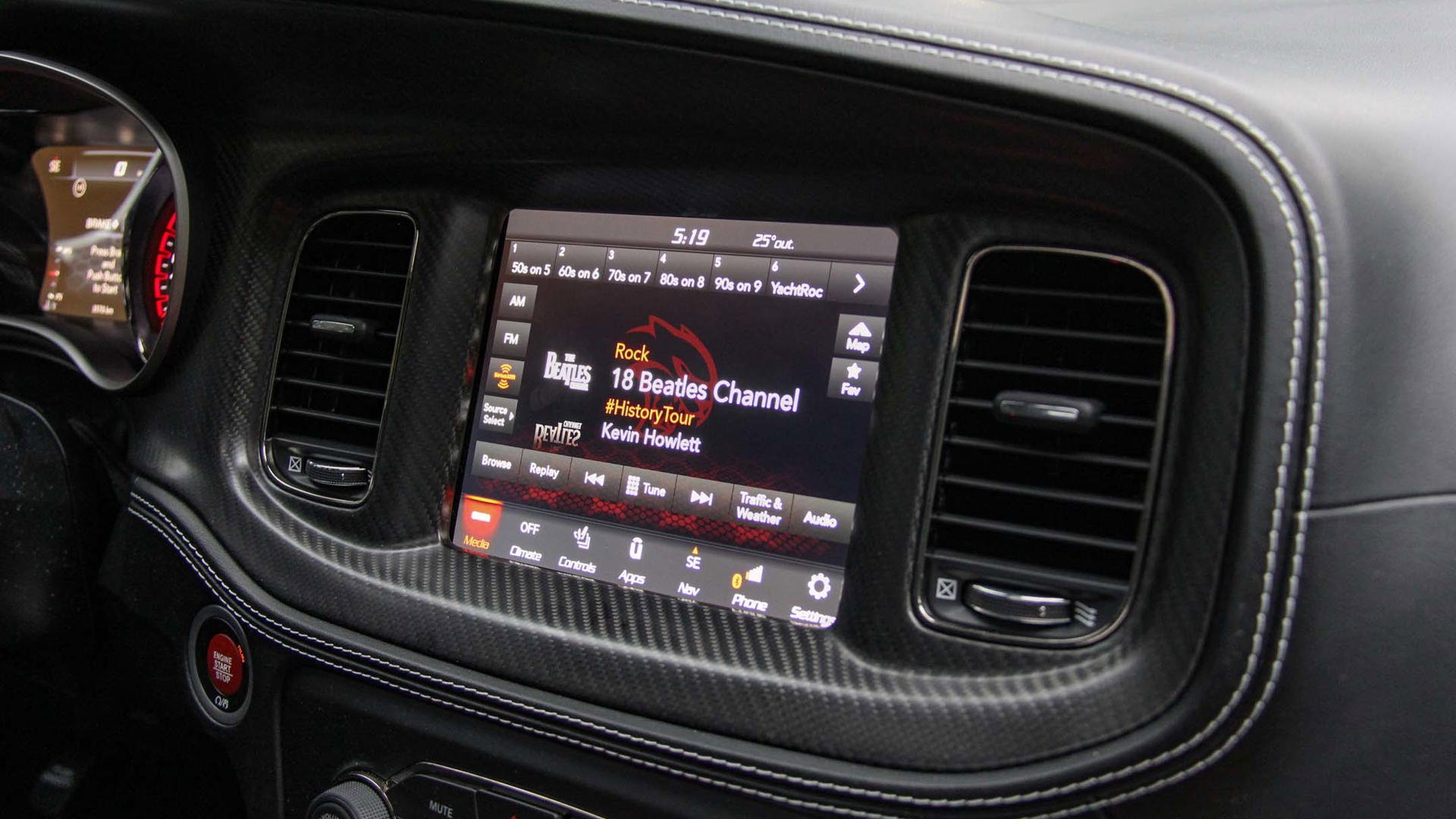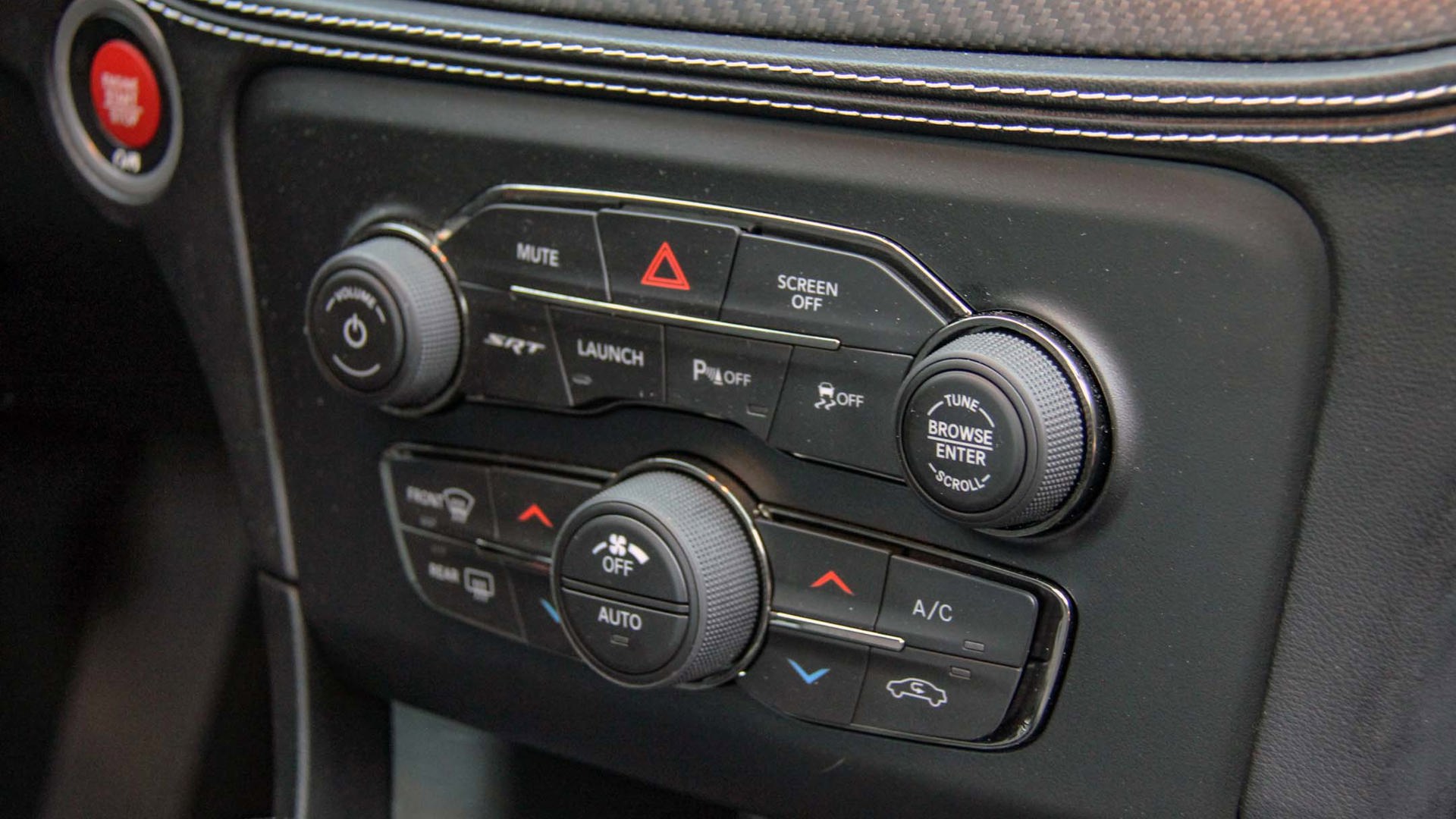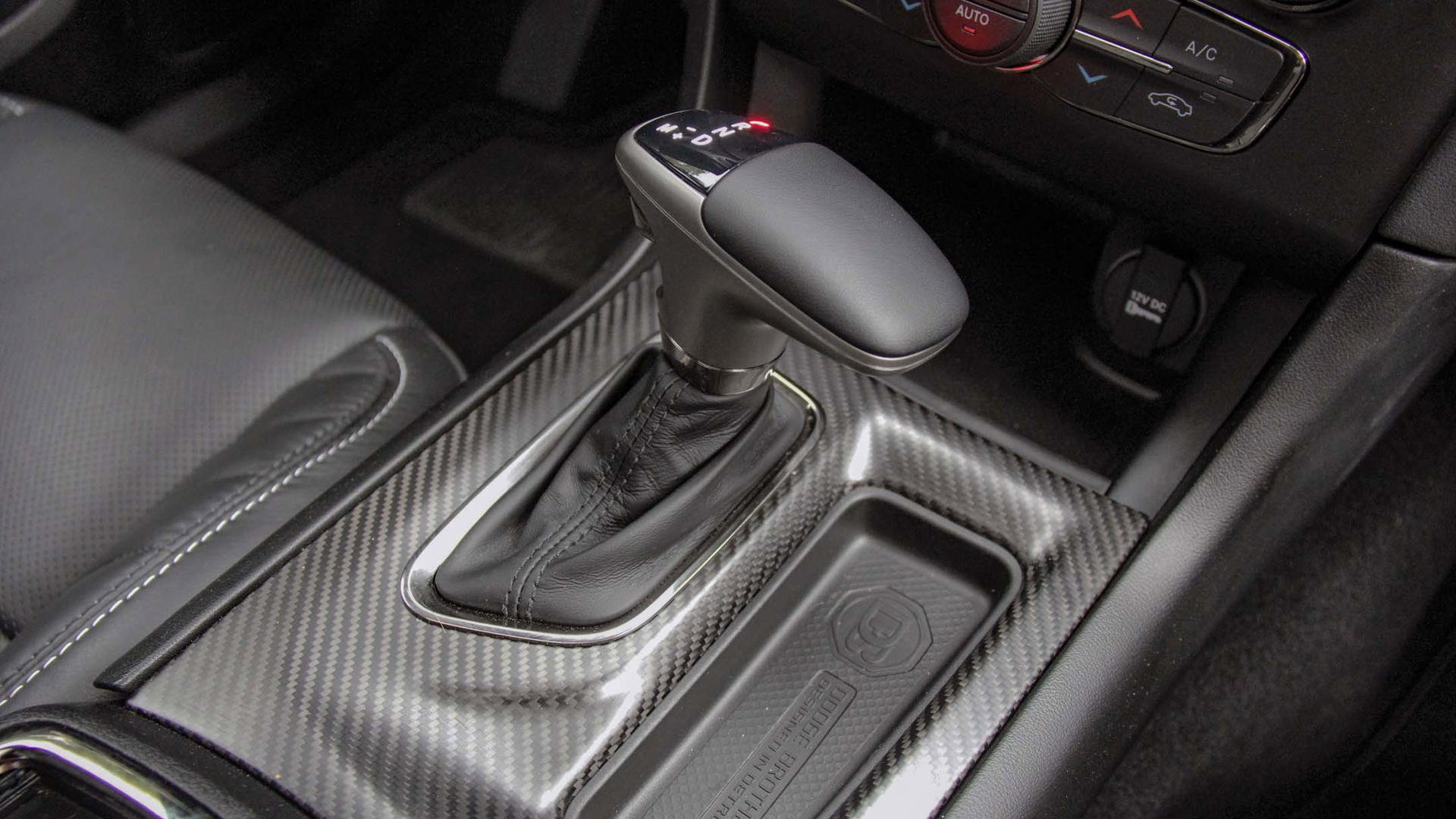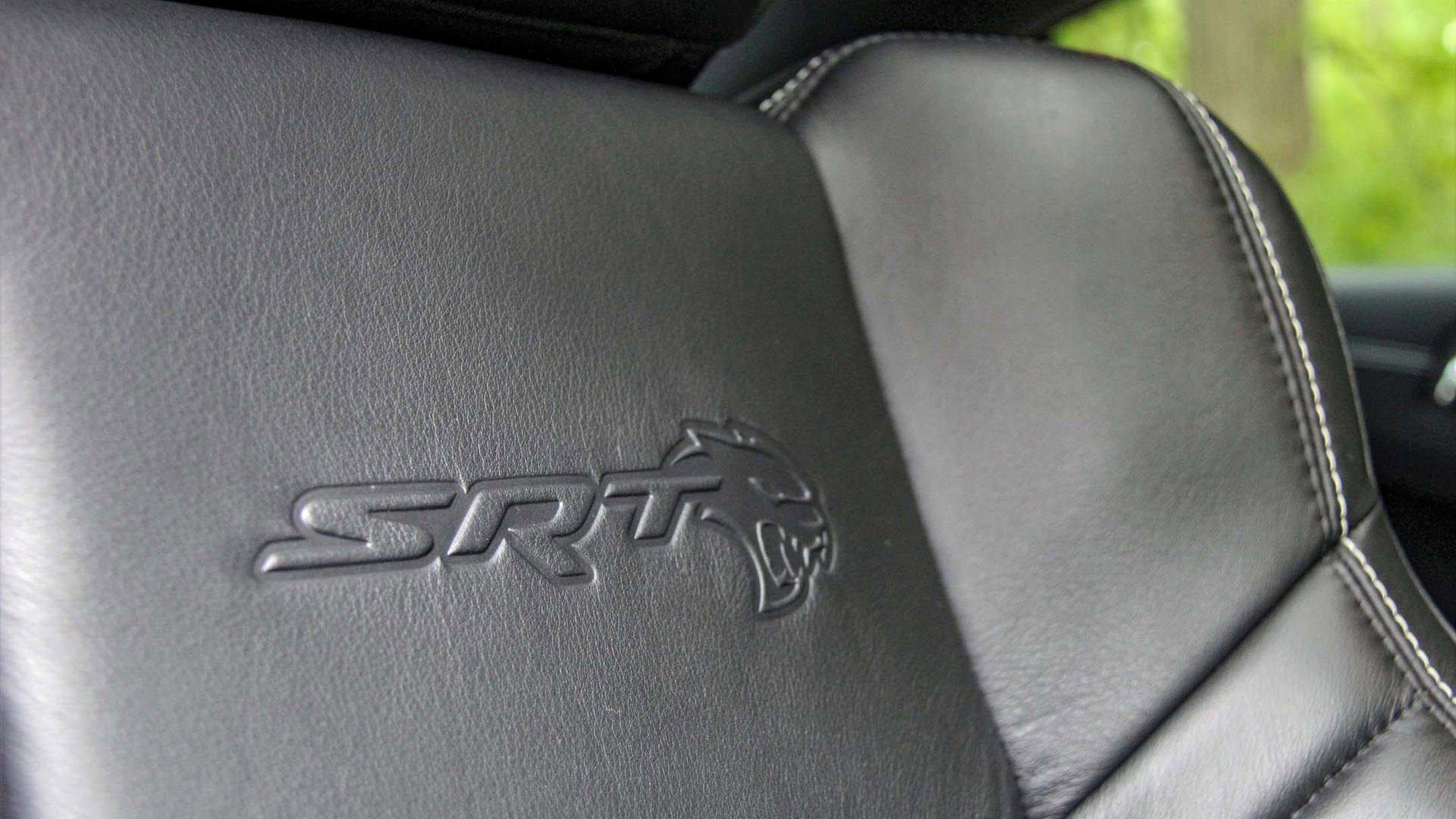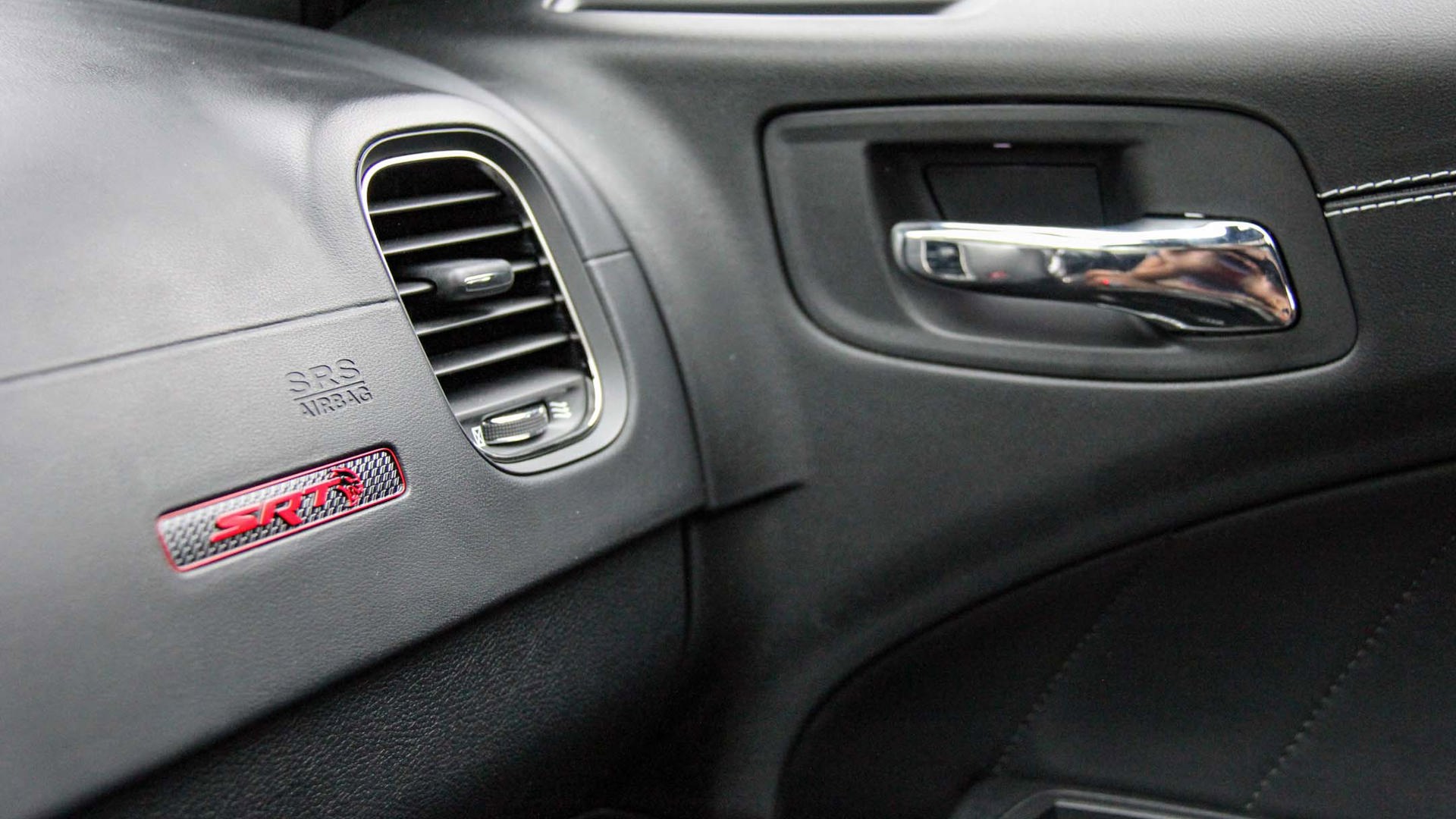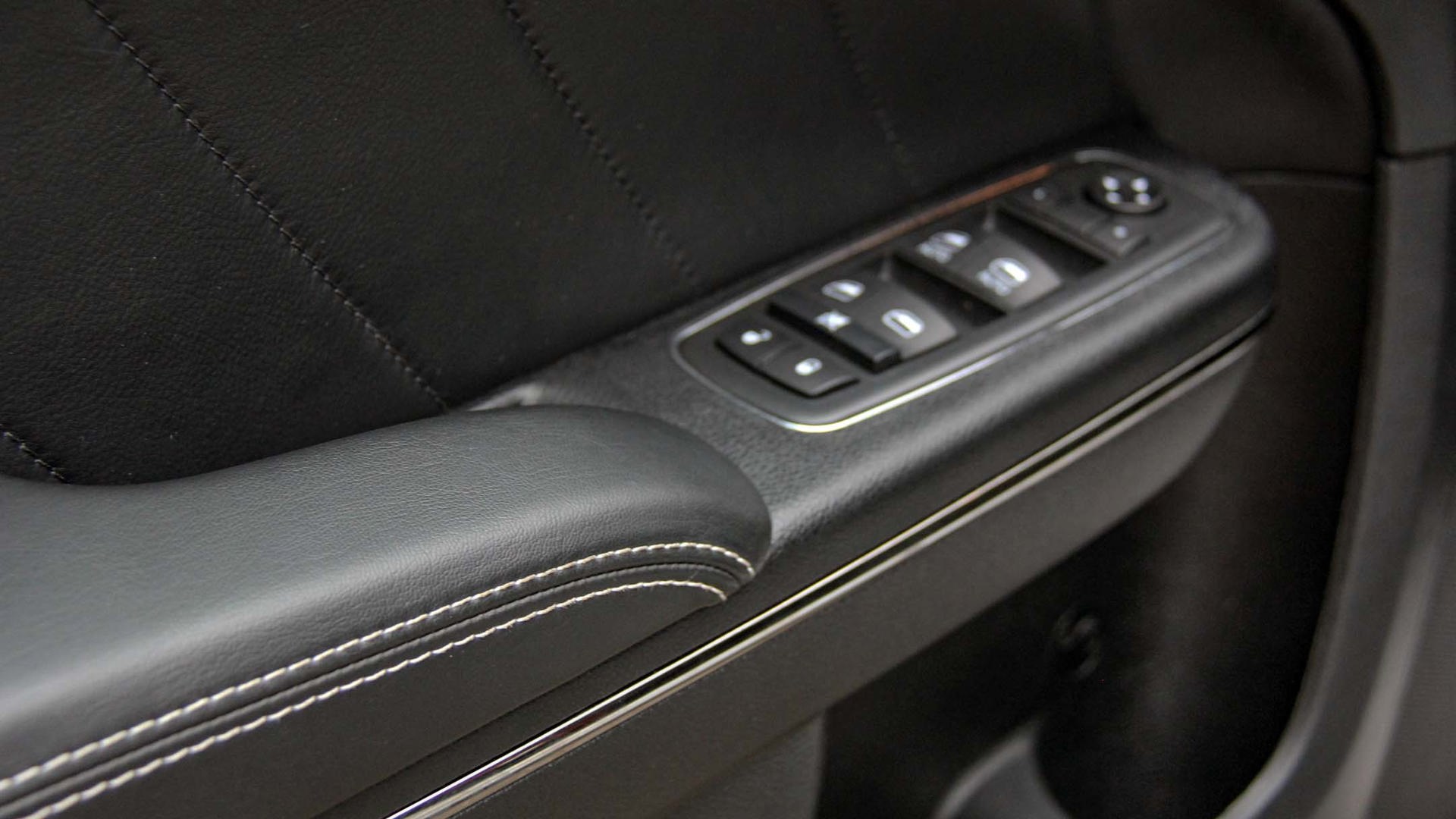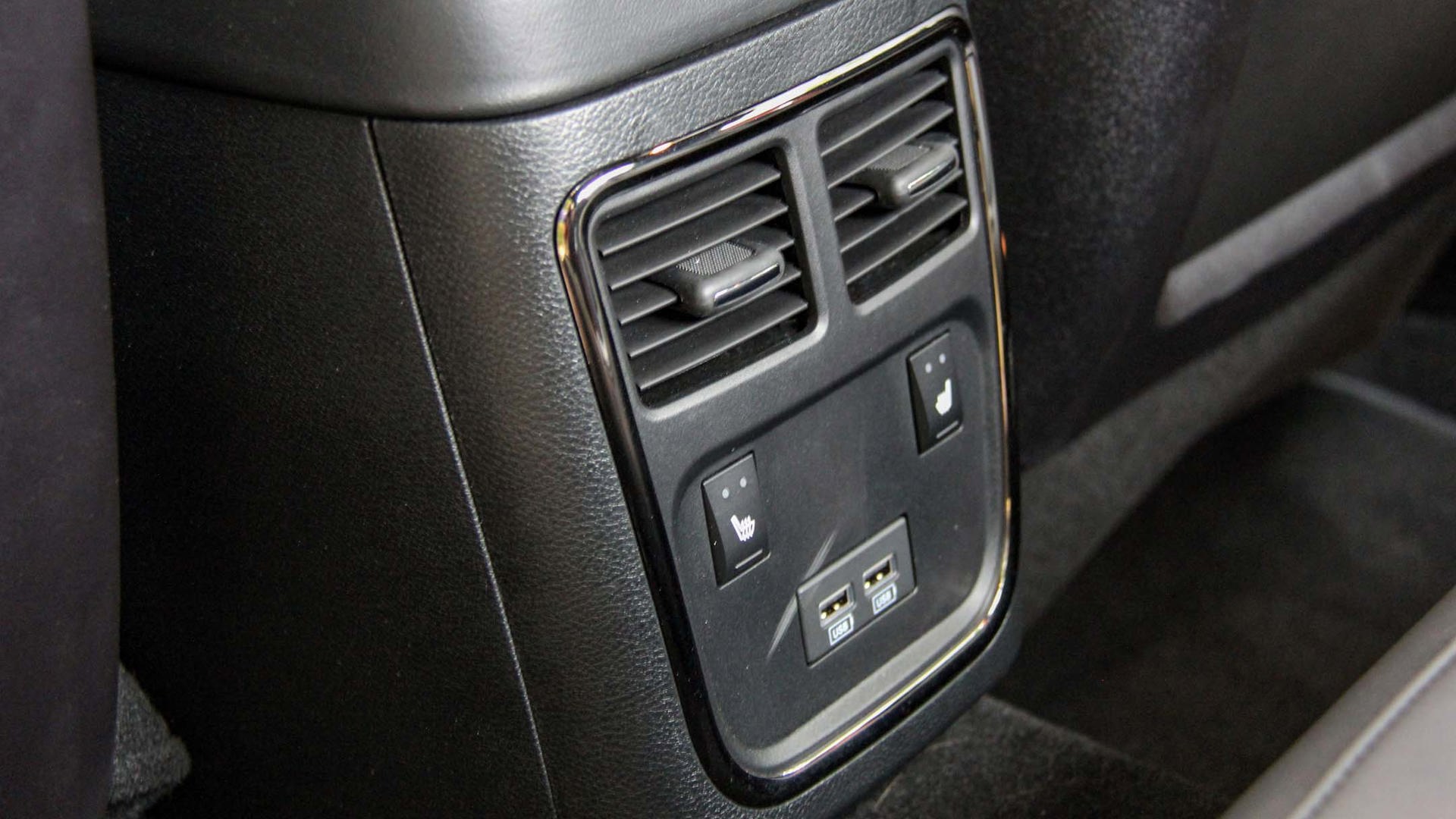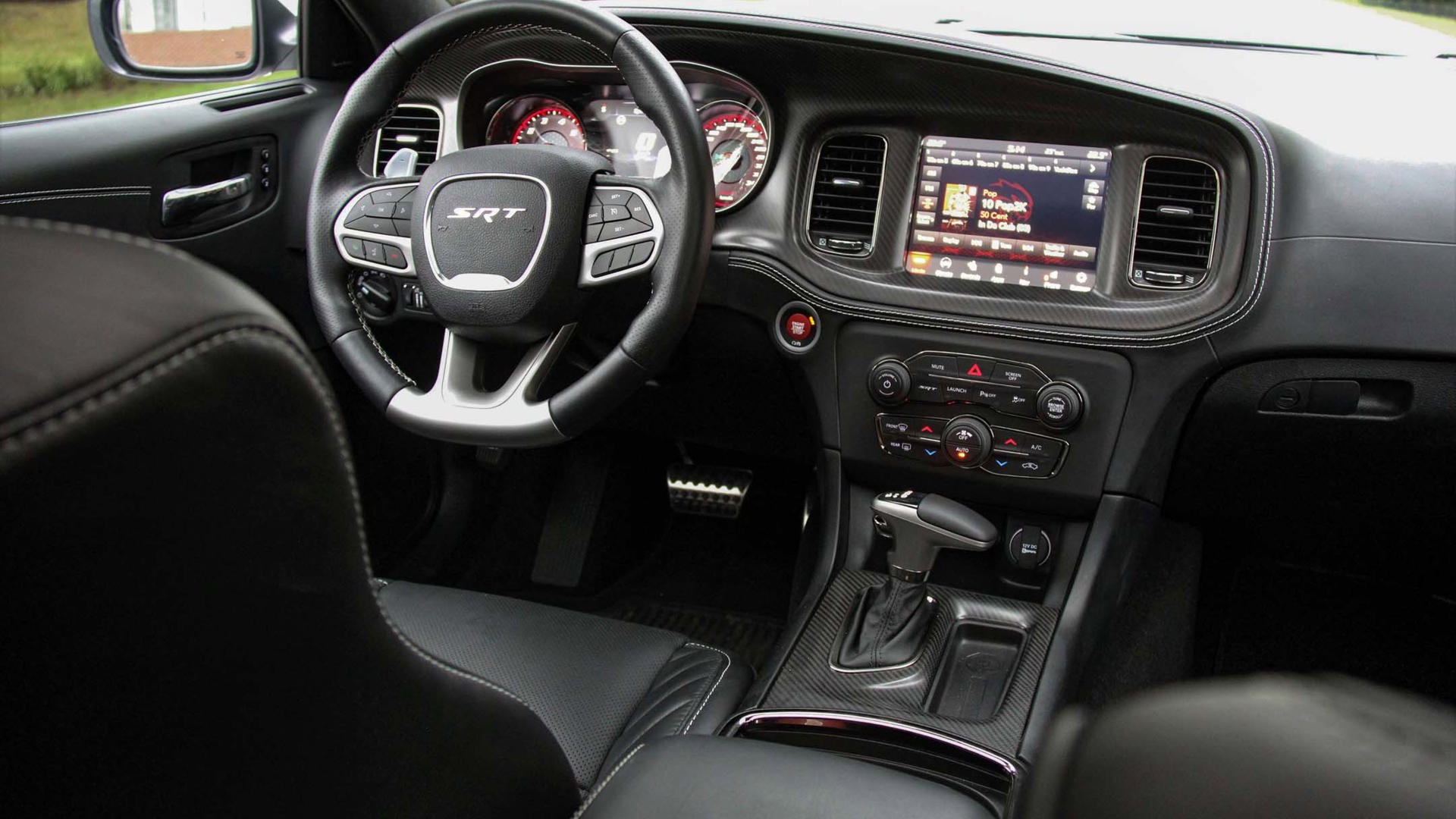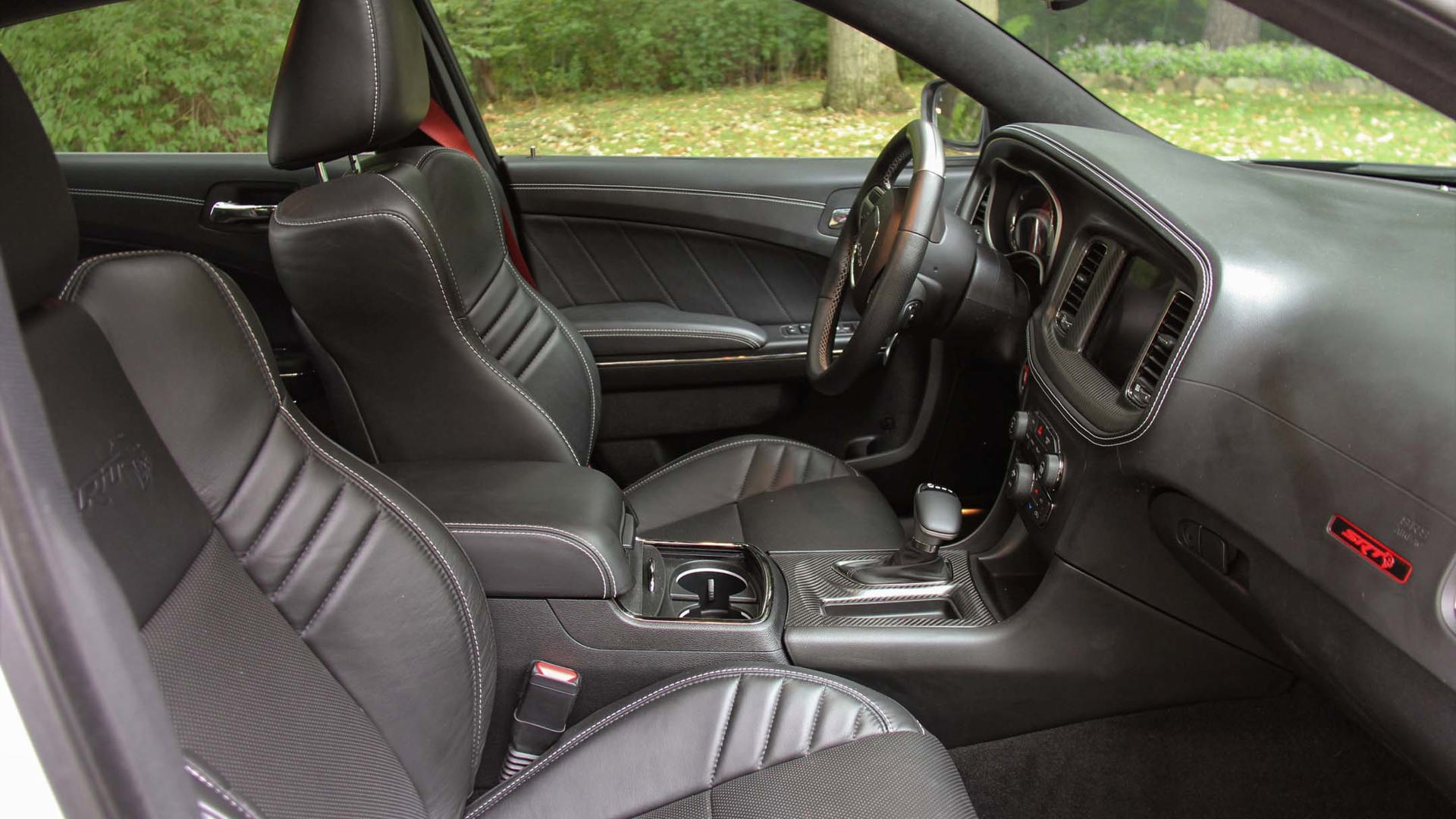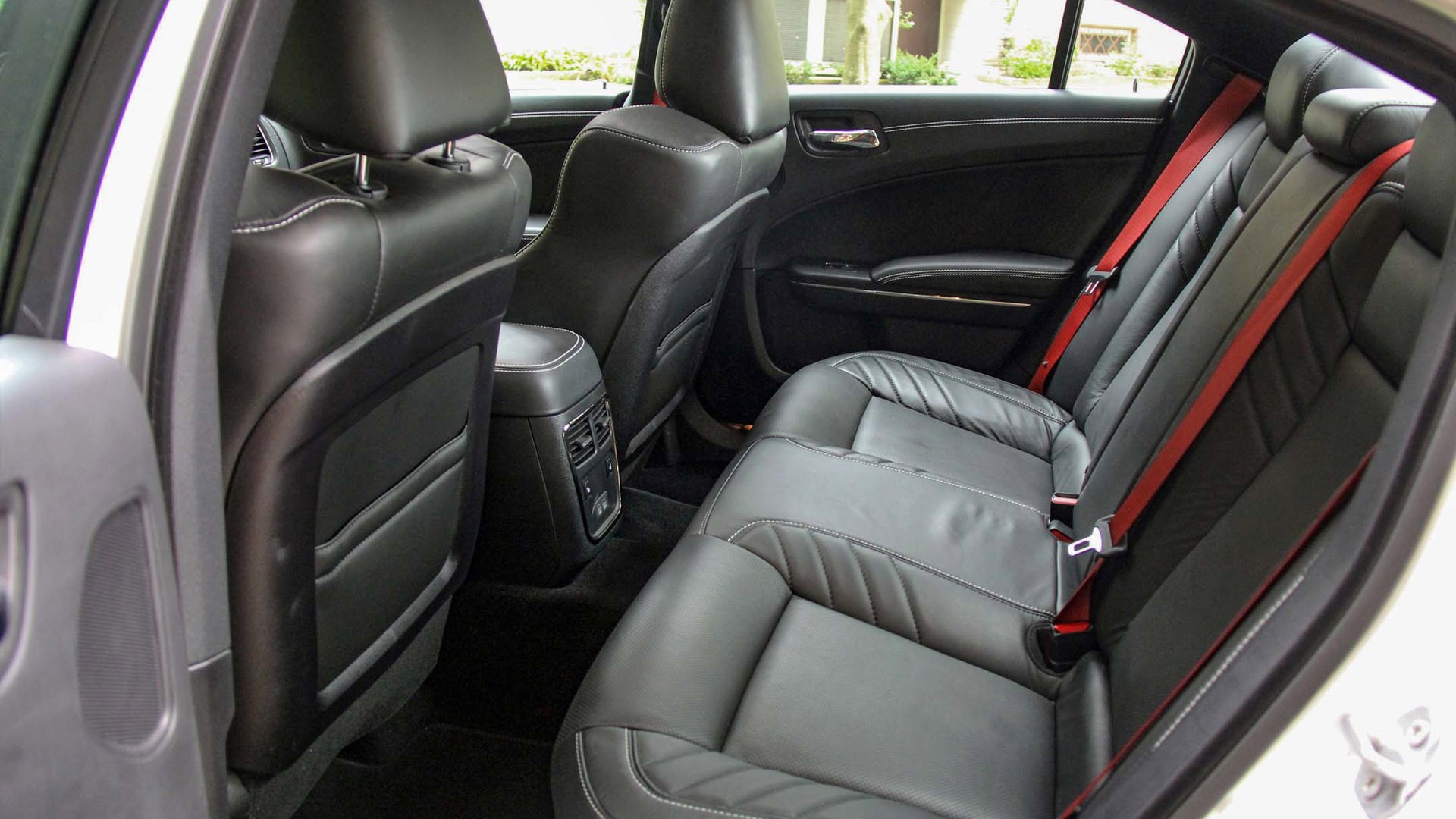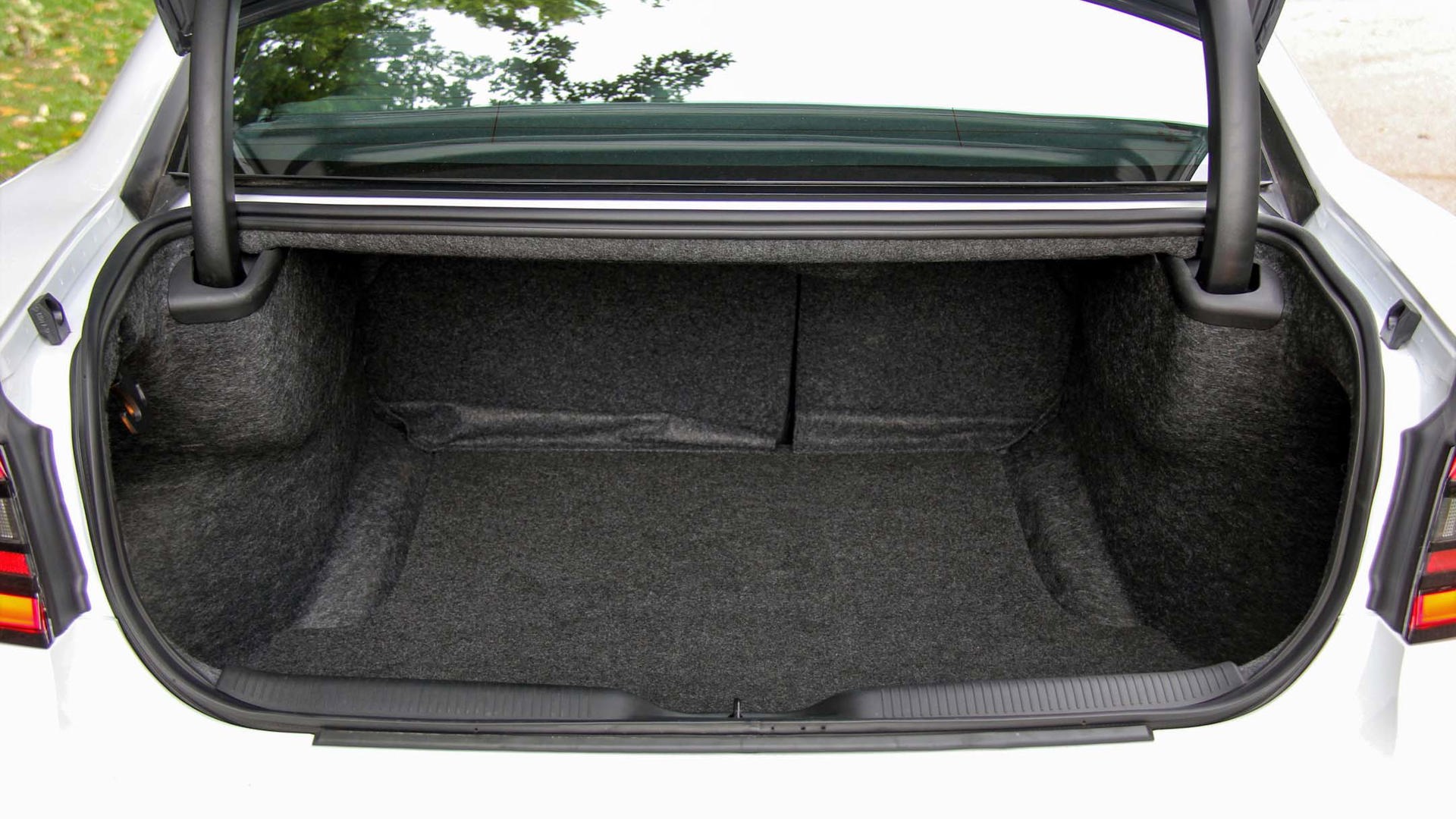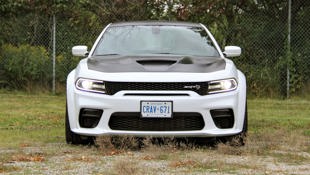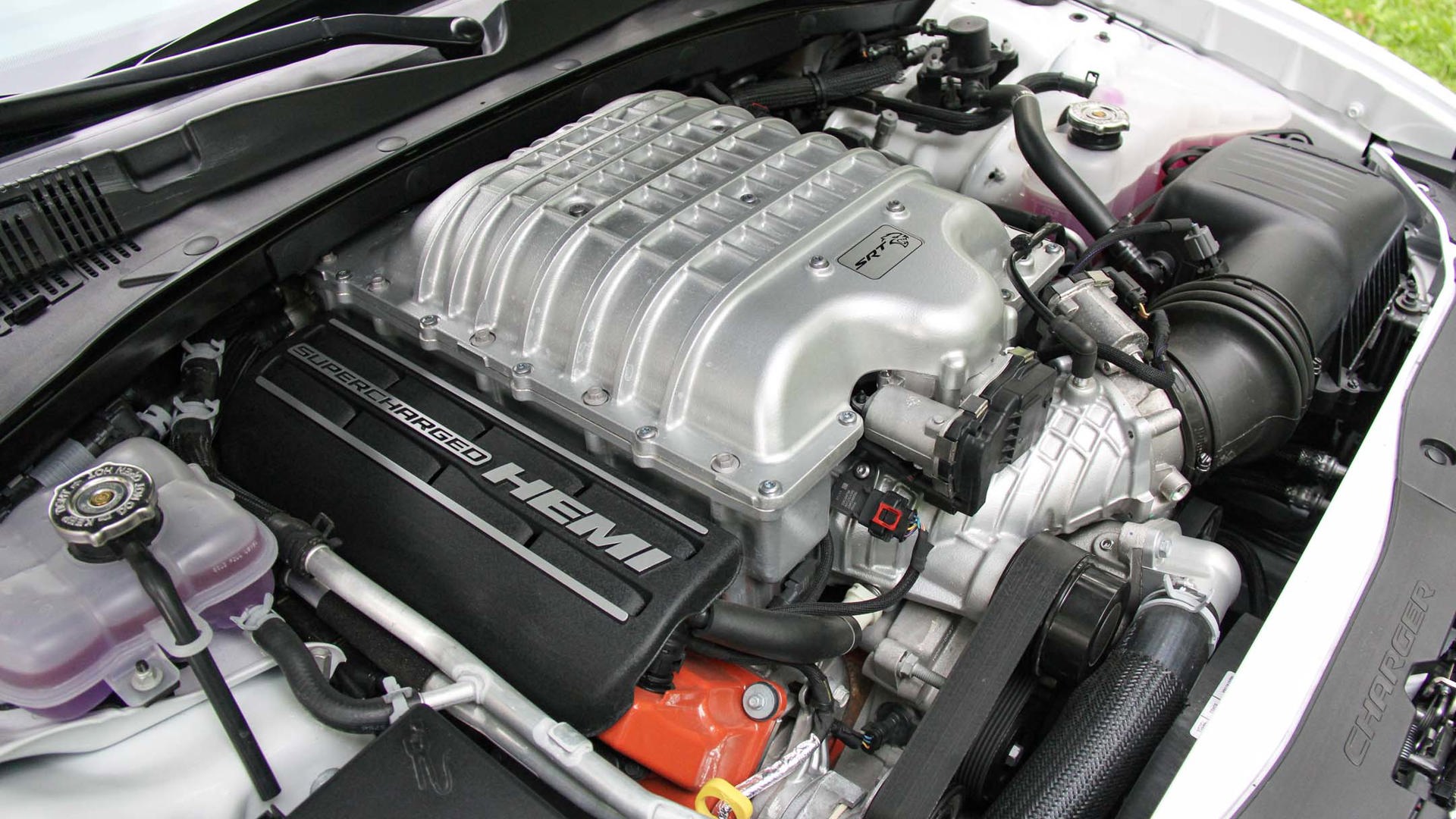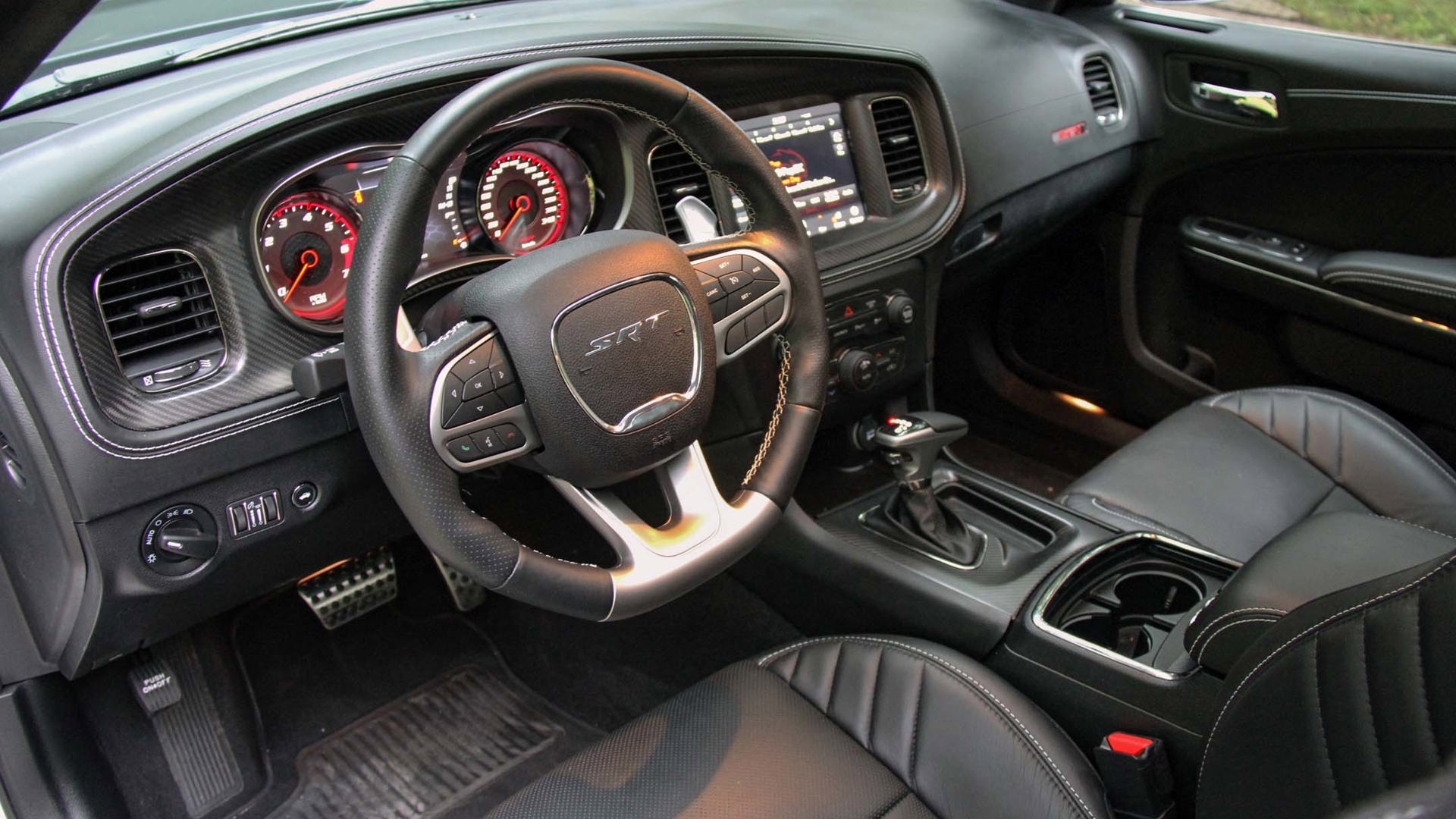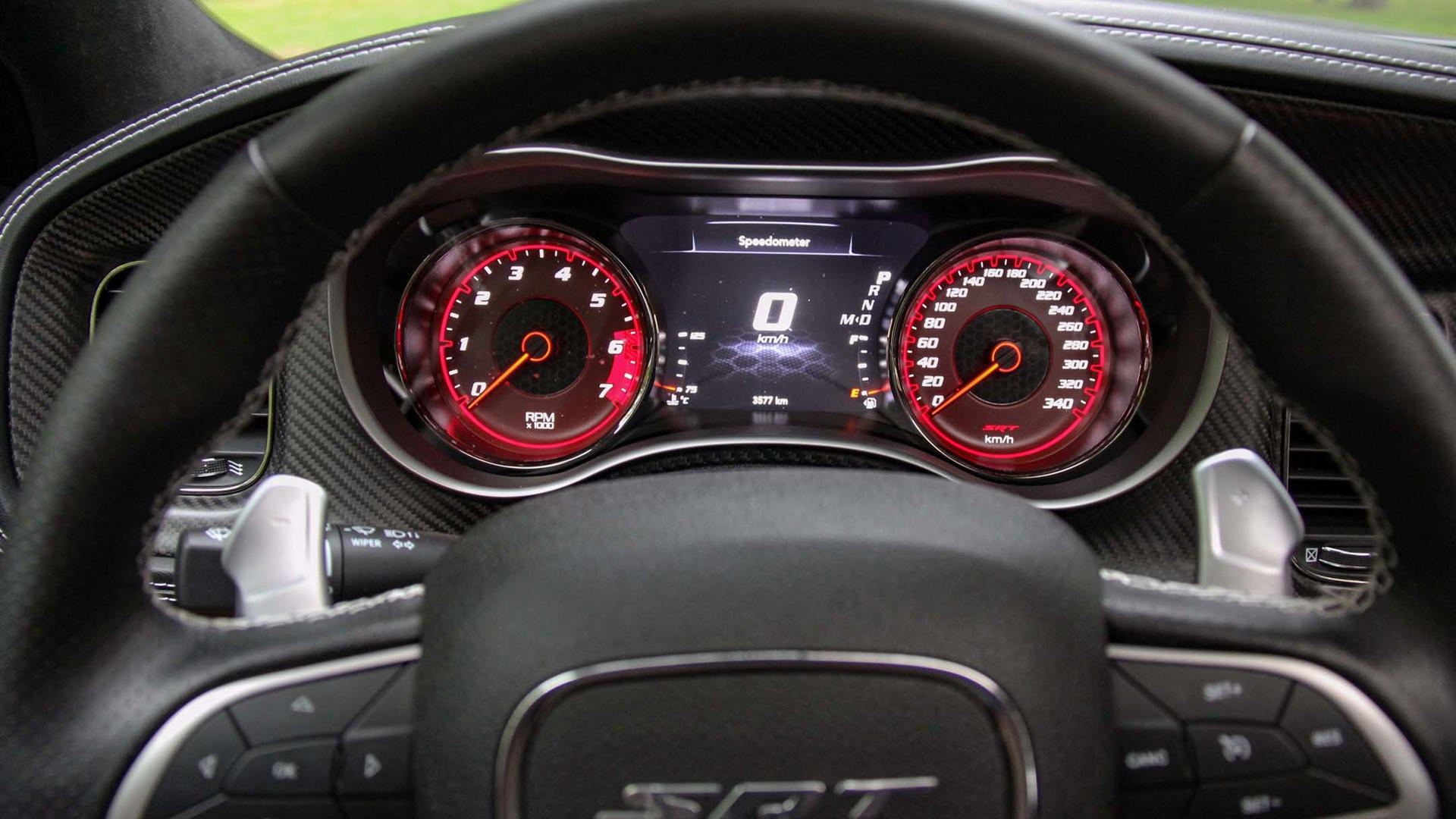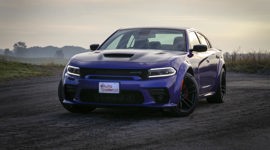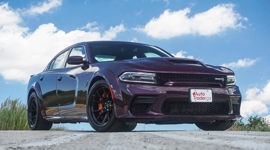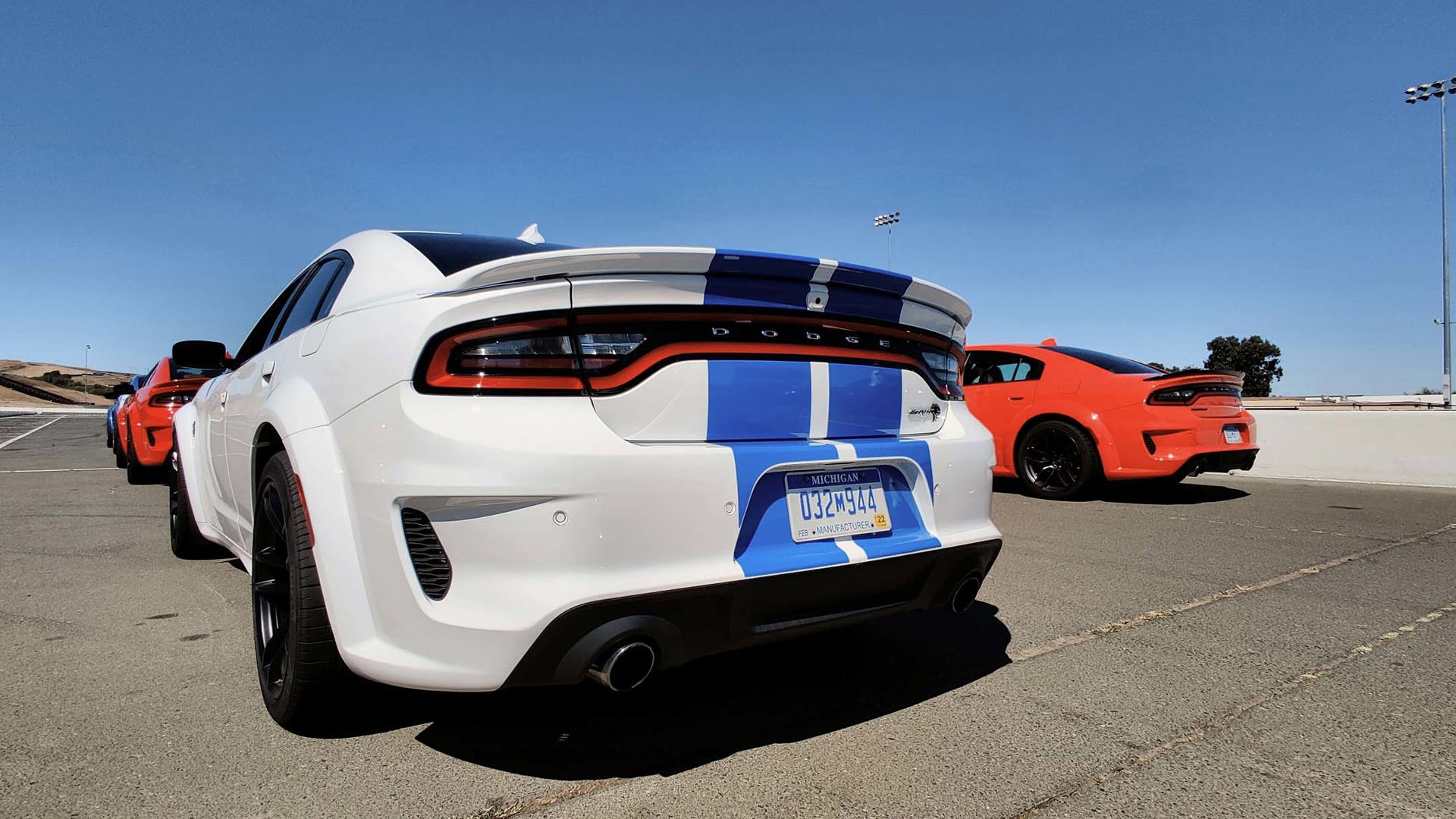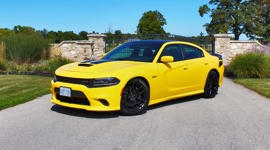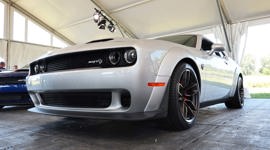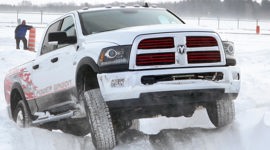 AutoTrader SCORE
AutoTrader SCORE
-
STYLING9/10
-
Safety7/10
-
PRACTICALITY9/10
-
USER-FRIENDLINESS8/10
-
FEATURES8/10
-
POWER10/10
-
COMFORT8/10
-
DRIVING FEEL9/10
-
FUEL ECONOMY5/10
-
VALUE8/10
In our contemporary era of “wokeness,” where everyone seems to be competing to see who can be the most environmentally friendly and politically correct, the 2020 Dodge Charger Hellcat Widebody raises a defiant middle finger with irreverence and a complete disregard for the status quo.
Every couple of years, Dodge will unveil a new trim offering, graphics package, or obscene horsepower boost to keep things current. Needing no further assistance in the straight-line department, the Brampton, Ont.-built Charger got the option of a widebody package, along with updates to suspension and power steering to help it handle the curves.
Styling: 9/10
Since the day it was first revealed, I’ve said that the modern Dodge Charger is among the best-looking sedans on the market. Thankfully, the styling has aged well, because the design has remained unchanged for a long time now. Not exactly subtle, the Widebody’s flared fenders get an additional 90 mm (3.5 in) at all four corners, allowing for a set of 305/35ZR20 Pirelli tires to fit underneath them.
Despite its nearly six-figure price tag, the Hellcat’s interior disappointingly remains virtually the same as an entry-level V6-powered Charger SXT that will run you only $38,395. This particular tester had a number of boxes checked on the options list, including a carbon and suede interior package ($1,495) and red seat belts ($125) to spruce up the interior, and a black satin graphics package ($5,200) that complimented the White Knuckle paint to set it apart from the pack.
Safety: 7/10
While not your typical family hauler, safety may still be a concern for the discerning Charger Hellcat buyer, and any attributes that help you sell your spouse on the idea of a 707-hp sedan are helpful. A government-mandated back-up camera, blind-spot monitoring, and rear park assist are standard equipment, as are advanced multistage front airbags, as well as side curtain, front, and seat-side airbags. The traction control and three-mode electronic stability control may be helpful on the racetrack but could also come in handy if you happen to be driving in inclement weather. Adaptive cruise control, forward collision warning with emergency braking, and lane-departure warning and assistance are offered on other Charger models but not the Hellcat.
Practicality: 9/10
You simply won’t find a production vehicle with this much power that is as easy to live with as the Charger. [The Jeep Grand Cherokee Trackhawk makes a pretty compelling case, Mr. Woods. – Ed.] Not only does the Hellcat Widebody have four doors and a backseat big enough to keep adults content for long periods of time, it also has a trunk large enough to accommodate lots of cargo and abnormally shaped items like skis or your latest haul from Home Depot. The only sedan that comes close is the Mercedes-AMG GT 63 S four-door, but it only offers 630 hp and comes fitted with all-wheel drive – and it’s more than twice the price.
User Friendliness: 8/10
Vehicles boasting supercar-like performance numbers are rarely easy to live with. Rear visibility is often non-existent and simply figuring out how to put them in gear or change the radio station can be a challenge. The Charger’s audio and HVAC systems get their own redundant buttons and knobs, but the infotainment system is also intuitive and easy to use; all the vehicle’s various functions can be accessed via the 8.4-inch touchscreen. My only gripe here is that adjusting the heated steering wheel or the heated and ventilated front seats require you to navigate through several menus when they could easily have their own console-mounted buttons.
Features: 8/10
Apple CarPlay and Android Auto come as standard equipment, but both require you to plug in. My tester was equipped with the $600 power front seats and steering wheel package, as well as the $770 option that adds navigation, a five-year subscription to SiriusXM Traffic and Travel, and that 8.4-inch display. The upgraded stereo, meanwhile, is an extra $1,500. It’s somewhat surprising that the entry-level MSRP of $84,545 wouldn’t include any of these features.
Then again, that’s because much of the money goes towards performance goodies. Opting for this SRT obviously means getting a big honkin’ supercharged 6.2L V8, but it also comes with active exhaust, a line lock launch system, and an after-run cooling system. There’s also an app built into the infotainment system that allows you to manage settings, see additional gauges that monitor temperatures and engine output, and track acceleration and lap times.
Power: 10/10
I’d never go on record to declare that a car could have too much horsepower, but piloting the 797-hp Challenger Hellcat Redeye did present some challenges in regards to traction. Applying anything beyond a breath of throttle meant the rear end would light up like an aging hippie at a Neil Young concert. By comparison, the “normal” Hellcat’s 707 hp and 650 lb-ft of torque are really quite manageable, particularly in Widebody form. Of course, introducing your foot to the firewall will unleash a holy opus of screaming rubber complemented by the high-pitched whine of the supercharger. Zero to 100 km/h arrives in as little as 3.6 seconds, with power being managed exclusively to the rear wheels via the eight-speed automatic transmission. Gears can be changed automatically or manually via the gear selector or steering-wheel-mounted paddle shifters.
Comfort: 8/10
I’ve been more fortunate than most to drive a long list of vehicles that had more than 700 hp. They’ve all come with their own idiosyncrasies and shortcomings. They are often loud, brash, difficult to park, and nearly impossible for the average person to get into and out of. And that’s not to mention their lack of room for passengers or cargo. But not here. The suspension is smooth, compliant, and comfortable. The massive supercharged engine has a wonderful sound which isn’t intrusive unless you want it to be. Seats are adequately bolstered, but not so much so that they feel tight or restrictive.
Driving Feel: 9/10
Rather than simply being a one-trick pony, power can also be applied and held – albeit methodically – when the asphalt bends. This benefit is added in part thanks to the wider stance, but also the SRT-tuned Bilstein three-mode adaptive dampers, larger anti-roll bars front and rear, and the updated electric power steering that offers more precision and feedback.
With this kind of performance prowess, it’s important that stopping power is taken into account, too. 15.4-inch rotors are grabbed by six-piston Brembo calipers in front, with 13.8-inch discs and four-piston calipers in the rear. I can’t think of a single vehicle with this much power that is actually enjoyable to drive under civilized circumstances. Typically, heavy traffic would have you lurching, with shifts from a dual-clutch transmission shuddering under partial power. And that doesn’t take into account the ground clearance for things like speed bumps or driveway ramps. The Charger, however, can be driven quite comfortably like any other sedan. Until you want to let the stallions loose from the barn, then buckle up.
Fuel Economy: 5/10
Whenever someone would ask me what sort of fuel economy I was getting with my own V8 sports car, I would ask them two questions: “Why would I want to know that information?” And subsequently, “What would I then do with said knowledge?” Official Natural Resources Canada (NRCan) numbers rate the Hellcat at 11.5 L/100km on the highway, 19 in the city, and 15.6 combined. My own average was in the low 20s.
Based on normal driving conditions, the government agency estimates an annual cost of $4,524 for 20,000 km of driving. Chances are pretty good that if you buy a Hellcat-powered car such as this, “normal” driving conditions are somewhat more enthusiastic. Whatever you budget for fuel, you’ll want to double it for speeding tickets and the regular replacement of the rear tires.
Value: 8/10
Granted, the starting MSRP of $84,545 for the Charger SRT Hellcat Widebody is not small potatoes, particularly when compared to other versions of this car with which it shares many aspects. It only takes a few minutes of research to realize that the Hellcat and Redeye don’t have any true competitors. If your search is limited to production rear-wheel-drive sedans boasting more than 700 hp, you’ll be limited to these two models.
Resale value should also be considered, as used models are available at a decent savings, but you’ll also want to take into account who was driving that 707-hp car before you. Chances are pretty good it wasn’t a little old lady taking it to church on Sunday.
The Verdict
The 2020 Dodge Charger SRT Hellcat Widebody fixes many of the shortcomings of this car’s previous iterations – well, aside from the quality of the interior. It handles far better, and it further separates itself from its run-of-the-mill V6 models that find themselves on rental fleets. Any performance-oriented vehicle you could purchase that’s packing more than 700 hp is going to come with a long list of aggravating compromises, but the 2020 Dodge Charger SRT Hellcat Widebody may have the fewest of them all.
| Engine Displacement | 6.2L |
|---|---|
| Engine Cylinders | V8 |
| Peak Horsepower | 707 hp @ 6,000 rpm |
| Peak Torque | 659 lb-ft @ 4,800 rpm |
| Fuel Economy | 11.5/19/15.6 L/100 km cty/hwy/cmb |
| Cargo Space | 467 L |
| Model Tested | 2020 Dodge Charger SRT Hellcat Widebody |
| Base Price | $84,545 |
| A/C Tax | $100 + Federal Green Levy, $1,000 |
| Destination Fee | $2,595 |
| Price as Tested | $99,450 |
|
Optional Equipment
$11,210 – Navigation and Travel Group, $795; Power Convenience Group, $600; Carbon and Suede Interior Package, $1,495; harman/kardon Audio group, $1,500; Satin Graphic Package, $5,200; Power Sunroof, $1,495; Red Seat Belts, $125
|
|
